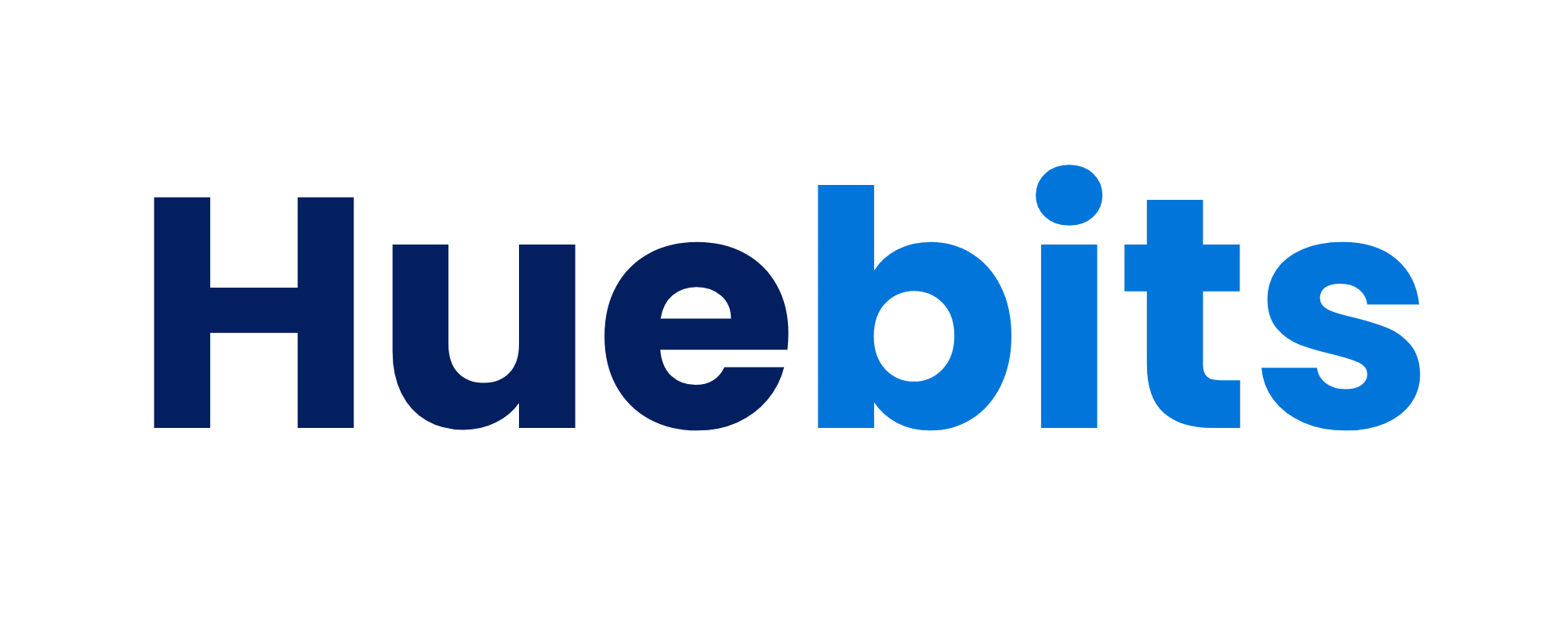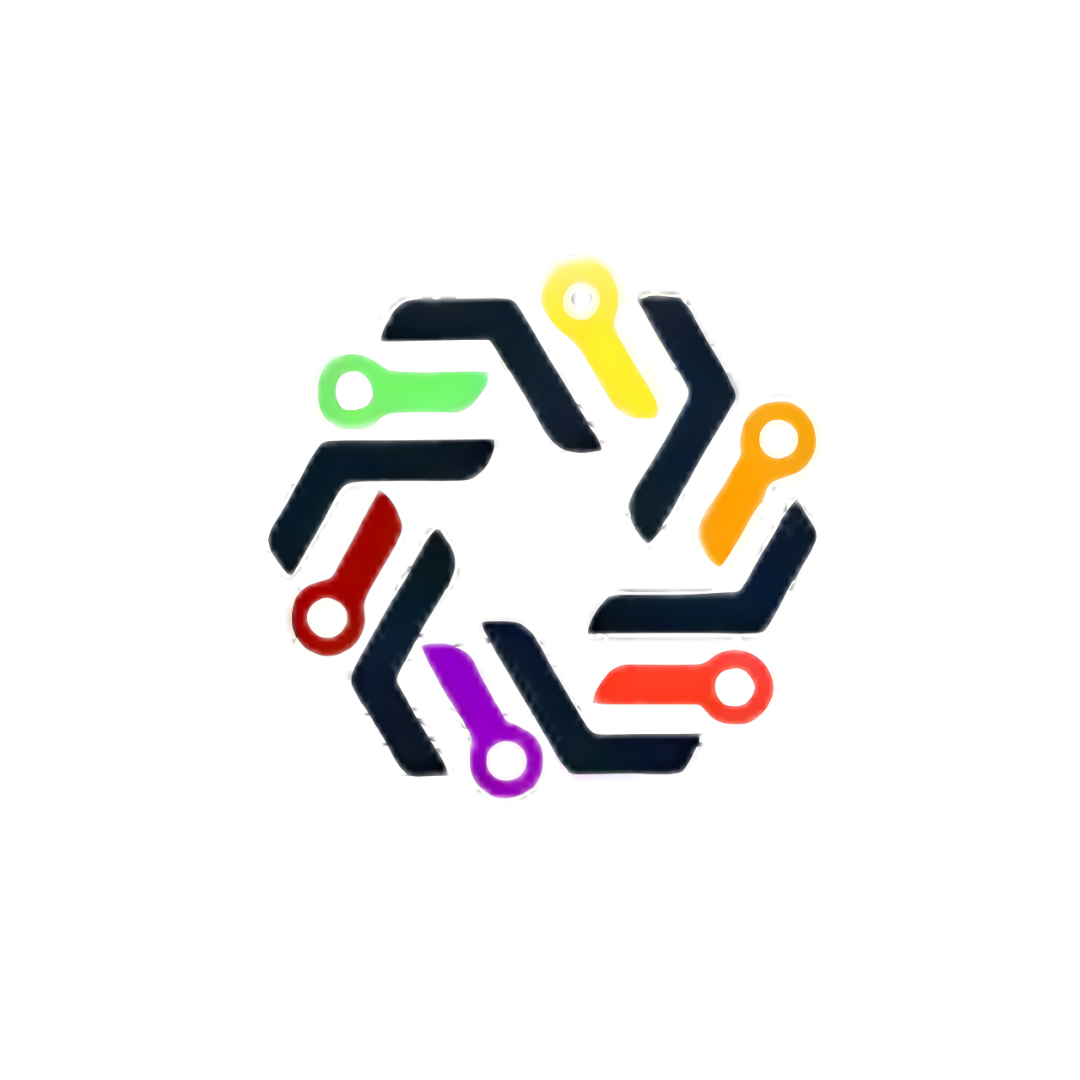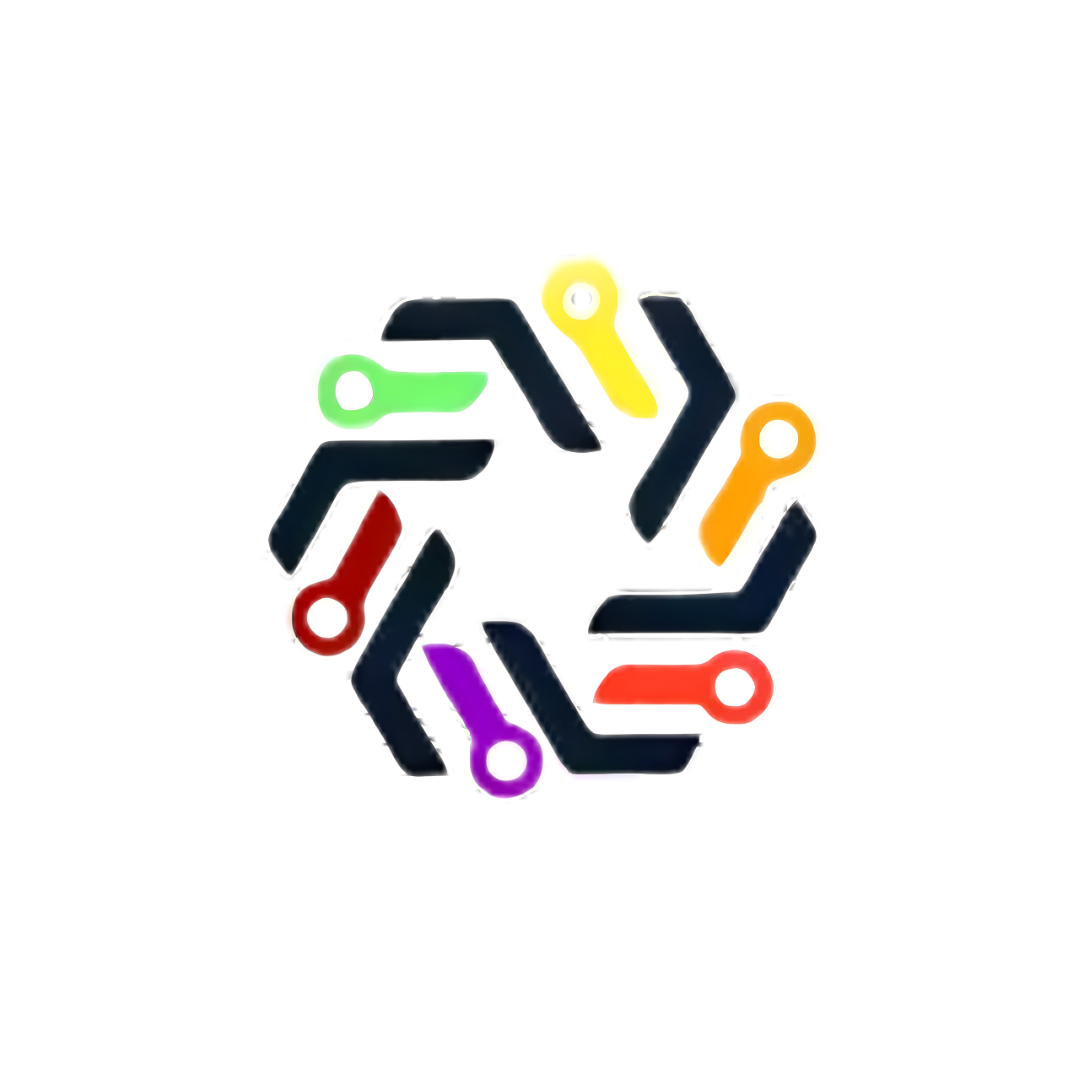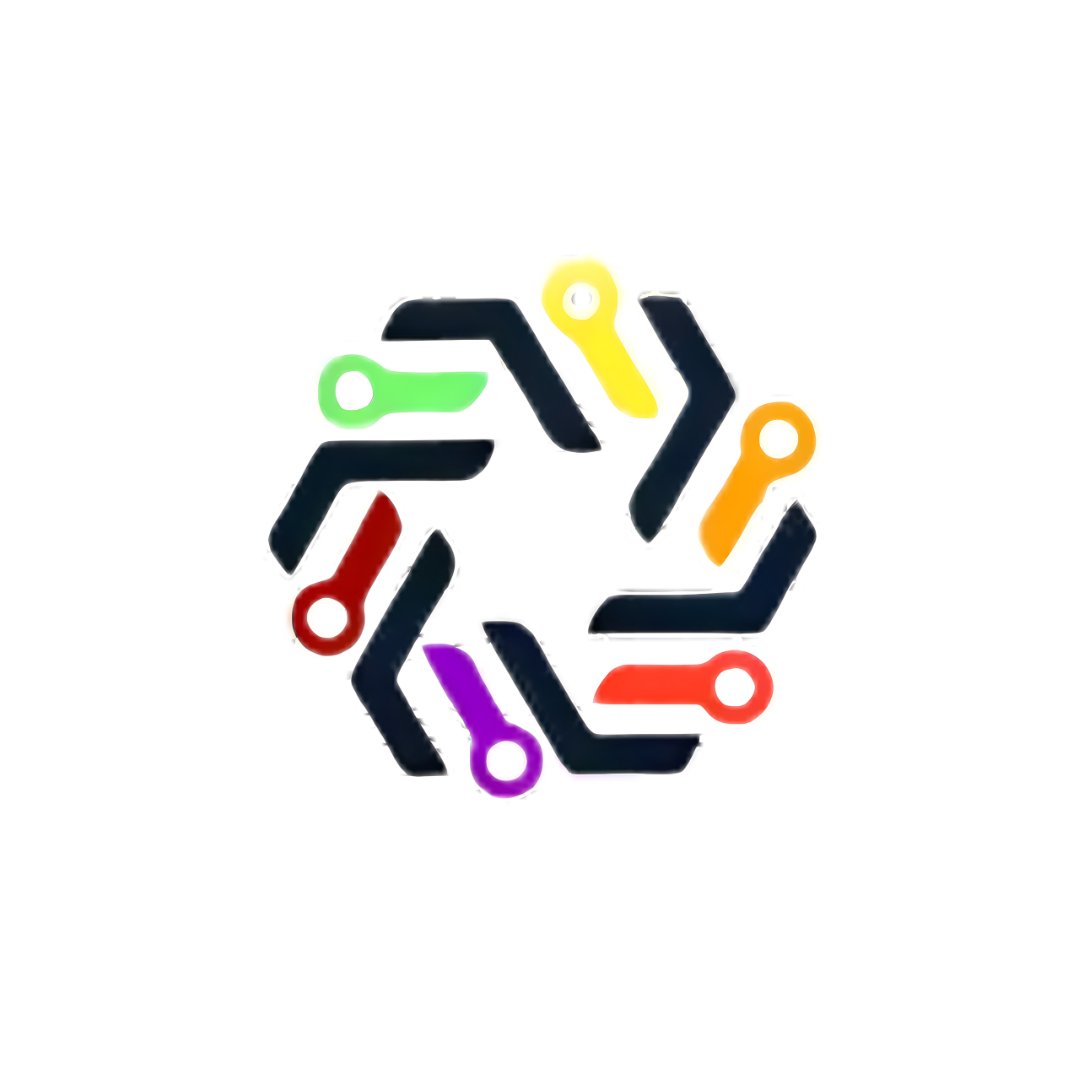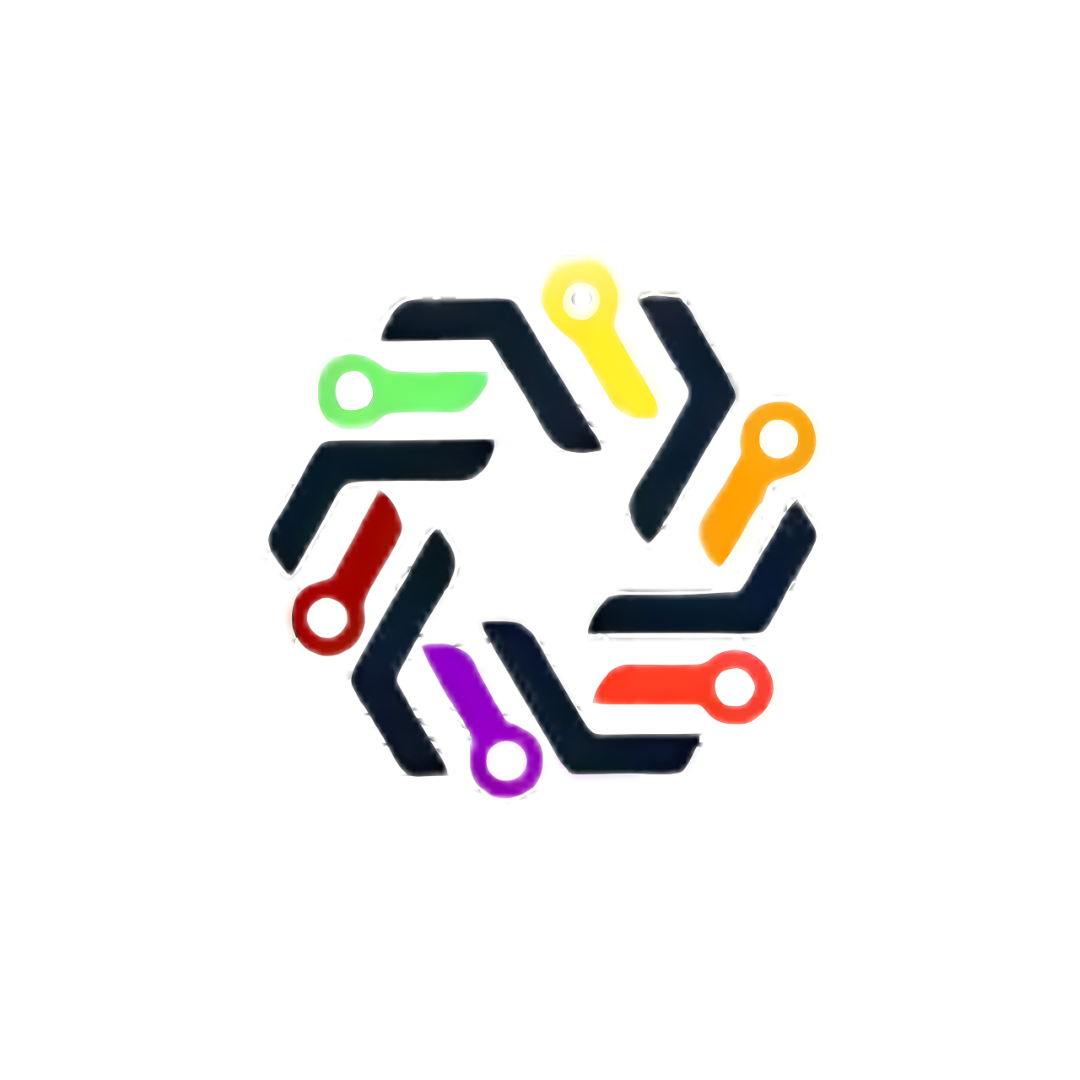Top 10 AWS Projects for 2025: Master Cloud & Boost Your Career

The cloud isn't coming—it’s already here, not as a trend, but as the foundational bedrock of modern business. From powering the intricate global logistics of e-commerce giants to enabling the hyper-personalized experiences of streaming services, the cloud, especially AWS (Amazon Web Services), is the invisible engine driving our digital world. As of mid-2025, AWS continues its dominance, holding the largest market share in the public cloud space, even as competitors like Microsoft Azure and Google Cloud Platform make significant strides. Its unparalleled breadth and depth of services, from compute and storage to advanced AI/ML and IoT, make it the preferred choice for agile startups, disruptive unicorns, and the vast majority of Fortune 500 enterprises alike.
If you're gunning for a truly future-proof tech career in mid-2025, the landscape demands more than just certifications or theoretical knowledge. The industry has matured, and employers are actively seeking individuals with demonstrable, hands-on experience in building, deploying, and managing real-world cloud solutions. You don't just need to understand AWS; you need to prove you can execute with it. You need projects that scream innovation, optimize for cost, prioritize security, and deliver tangible value.
This blog dives deep into the Top 10 AWS Projects that are not only aligned with the most critical cloud trends and in-demand services of 2025 – such as the explosion of Generative AI, the imperative of FinOps, the ubiquity of serverless, and the strategic adoption of containers – but will also dramatically boost your portfolio. These aren't just academic exercises; they are blueprints for impactful creations that directly address current industry challenges. By building these, you'll not only gain invaluable practical skills but also position yourself as an industry-ready cloud engineer, architect, or developer, equipped to tackle the complex challenges and seize the immense opportunities within the ever-evolving AWS ecosystem. Get ready to transform your understanding into impactful creations and stand out in the fiercely competitive, yet highly rewarding, cloud job market.
Format of the Projects:
1) Overview of the Project
2)Why it Matters
3)Skills Required
4)Tech Skills & Stack
5)Benefits
Table of Content:
1. AI-Powered Resume Screener with AWS Lambda & Textract
2. Real-Time IoT Data Dashboard with AWS IoT Core + Grafana
3. Predictive Maintenance using SageMaker & CloudWatch Logs
4. Scalable E-commerce Backend using AWS Fargate + RDS
5. Secure File Upload System using S3 Pre-Signed URLs + Cognito
6. Chatbot with Lex + Lambda + DynamoDB
7. Personalized News Recommender using Personalize
8. CI/CD Pipeline with CodePipeline + CodeBuild + CodeDeploy
9. Serverless URL Shortener with API Gateway + DynamoDB
10. Disaster Recovery Architecture with Multi-AZ & Multi-Region
1. AI-Powered Resume Screener with AWS Lambda & Textract
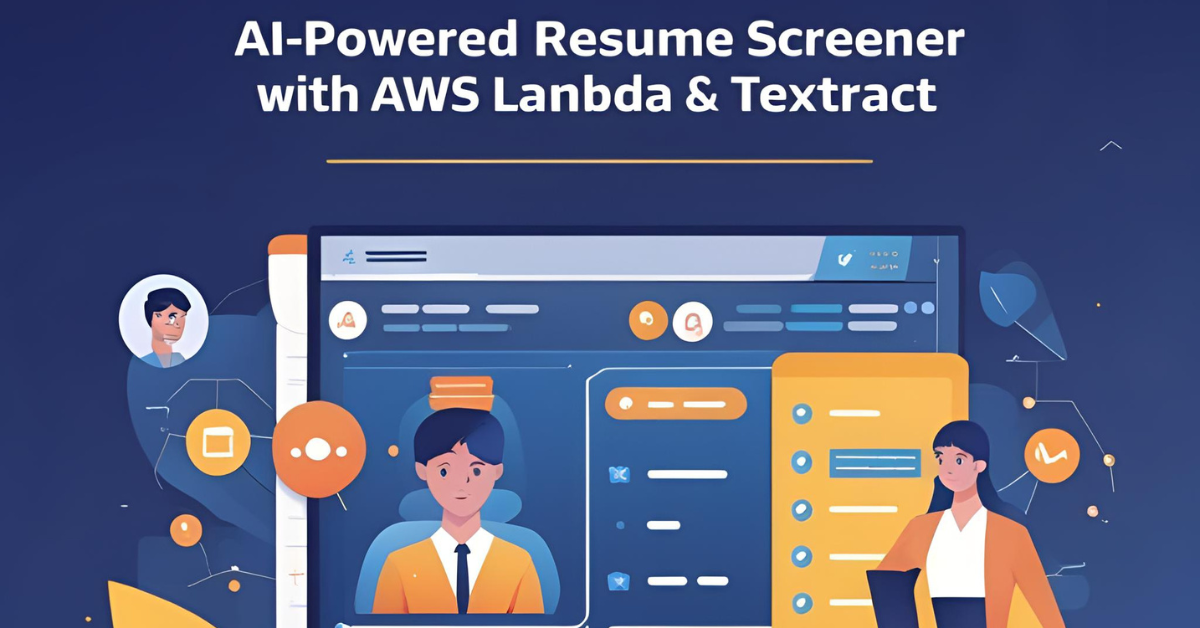
Overview of the Project: This project designs and implements a cutting-edge, automated resume screening system leveraging the power of serverless architecture and AI. The workflow begins when a recruiter or applicant uploads a resume document (e.g., PDF, DOCX, JPG) to an Amazon S3 bucket. This upload event automatically triggers an AWS Lambda function. This initial Lambda then invokes Amazon Textract, a machine learning service that intelligently extracts text, forms, and tables from the document, preserving the context and structure.
Once Textract processes the resume, the extracted raw text data is passed back to another Lambda function (or a series of chained Lambdas) for deeper analysis. Here, you'd implement custom logic or integrate with other AWS AI services (e.g., Amazon Comprehend for sentiment analysis, or custom machine learning models) to:
- Identify key skills and keywords (e.g., "Python," "Kubernetes," "Data Science").
- Extract candidate contact information.
- Parse work experience, education, and achievements.
- Compare extracted skills and experience against predefined job description criteria or a master list of required qualifications.
- Generate a compatibility score or ranking for each resume.
Finally, the system can notify the HR team via Amazon SNS (Simple Notification Service) with a summary of the top-ranked candidates or store the parsed and ranked data in a structured database (like DynamoDB) for easy querying and review through a custom dashboard.
Why it Matters: In today's competitive job market, HR teams are inundated with hundreds, often thousands, of resumes for a single opening. Manually sifting through these is an incredibly time-consuming, repetitive, and often biased process. This project directly addresses these pain points by:
- Massive Time Savings: Automating the initial screening allows HR professionals to focus on qualitative assessments and candidate engagement rather than tedious data extraction.
- Enhanced Efficiency: The serverless, event-driven nature means the system scales automatically with demand, processing large batches of resumes quickly and efficiently.
- Reduced Bias: By focusing on objective keyword matching and skill extraction, the system can help mitigate unconscious bias often present in manual reviews, leading to fairer and more objective initial candidate assessments.
- Faster Hiring Cycle: Identifying top candidates more rapidly shortens the time-to-hire, which is critical for securing talent in a fast-paced environment.
- Data-Driven Insights: Storing parsed data allows for analytics on candidate pools, identifying skill gaps, and optimizing future job descriptions.
Skills Required:
- OCR (Optical Character Recognition) & Document Processing: Understanding how to leverage services like Textract for intelligent document analysis.
- Serverless Logic & Architecture Design: Designing efficient, event-driven workflows using AWS Lambda.
- Event-Driven Workflows: Implementing triggers and orchestrating data flow between services based on events (e.g., S3 object creation).
- Basic Data Parsing & String Manipulation: Writing code to extract and process relevant information from Textract's output.
- Asynchronous Processing Concepts: Handling potentially long-running document processing tasks.
- IAM (Identity and Access Management): Configuring secure permissions for Lambda functions and other services.
- Basic Python/Node.js Programming: For writing the Lambda functions.
Tech Skills & Stack:
- AWS Lambda: The core compute engine for executing the screening logic without managing servers. Used for triggering on S3 uploads, invoking Textract, and processing Textract's output.
- Amazon Textract: The specialized AI service for extracting text, forms, and tables from various document formats (PDFs, images, etc.).
- Amazon S3 (Simple Storage Service): Used as the primary storage for raw resume documents and potentially for storing processed output or analysis reports.
- Amazon SNS (Simple Notification Service): For sending notifications (e.g., email, SMS) to HR teams when new resumes are processed or when top candidates are identified.
- Amazon CloudWatch: For monitoring Lambda executions, logging errors, and setting up alarms to ensure the system's health.
- Amazon DynamoDB (Optional but Recommended): For storing the parsed and ranked resume data in a structured, NoSQL database for easy querying and integration with other applications or dashboards.
- Python or Node.js: The primary programming languages for writing Lambda functions.
Benefits:
- Scalable: Automatically handles fluctuations in resume submission volume, scaling up during peak hiring periods and down during lulls, ensuring consistent performance.
- Cost-Effective (Pay-per-use): You only pay for the compute time and Textract usage when the system is actively processing resumes, leading to significant cost savings compared to always-on servers.
- No Server Maintenance: As a fully serverless solution, there are no EC2 instances to provision, patch, or manage, drastically reducing operational overhead.
- Enhanced Accuracy: Leverages AI for consistent and accurate data extraction.
- Improved Candidate Experience (indirectly): Faster processing can lead to quicker responses to candidates.
- Focus on Value: HR teams can shift their focus from administrative tasks to strategic candidate engagement.
This project is an excellent demonstration of combining foundational serverless services with powerful AI capabilities, providing a tangible, real-world solution to a common business problem.
Project 1: AI-Powered Resume Screener with AWS Lambda & Textract Codes:
🔗 View Project Code on GitHub2. Real-Time IoT Data Dashboard with AWS IoT Core + Grafana
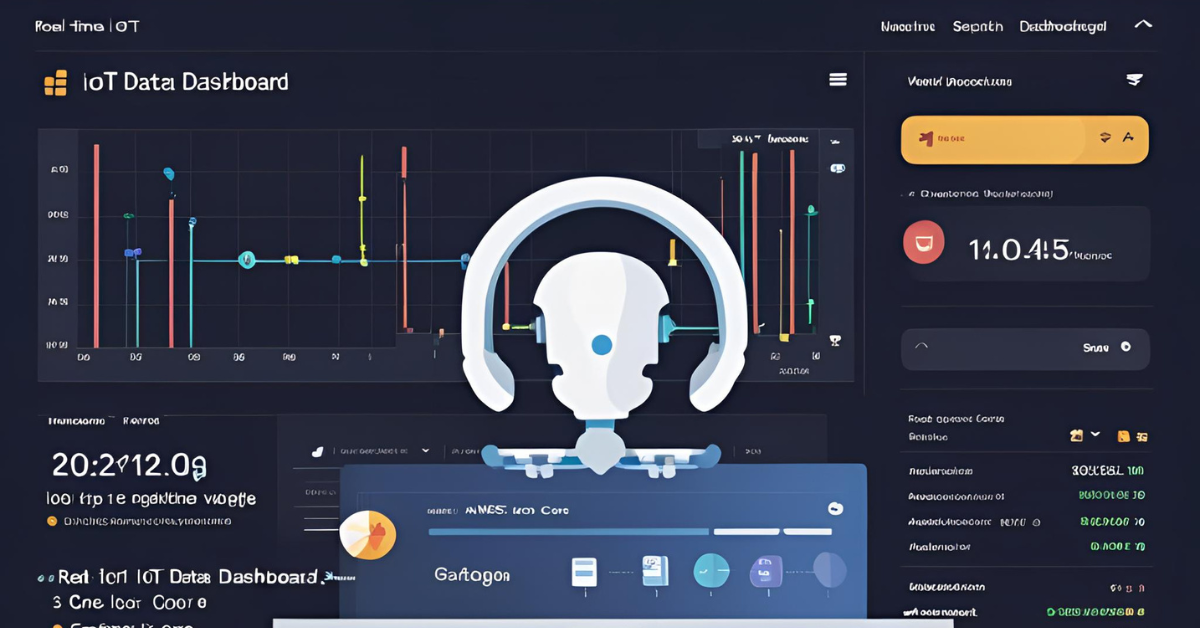
Overview of the Project
This project focuses on establishing a robust real-time data pipeline to ingest, process, and visualize data from Internet of Things (IoT) sensors. It leverages AWS IoT Core as the central hub for device connectivity and message routing. Sensor data, such as temperature, humidity, pressure, or device status, flows through AWS services, getting prepared for storage and analysis. Finally, Grafana, a powerful open-source analytics and visualization platform, will consume this processed data to render dynamic, interactive dashboards, offering live metrics and actionable insights.
Why It Matters
In today's interconnected world, IoT is no longer a niche technology; it's a fundamental component across industries. Real-time data visualization and monitoring are absolutely critical for:
- Industrial Monitoring & Control: Imagine tracking machinery performance on a factory floor, identifying anomalies, or predicting maintenance needs before failures occur. Live dashboards enable proactive decision-making.
- Smart Agriculture: Monitoring soil moisture, ambient temperature, and crop health to optimize irrigation and yield.
- Environmental Sensing: Tracking air quality, water levels, or weather patterns in urban or remote areas for immediate response to changes.
- Asset Tracking: Understanding the precise location and condition of valuable assets in transit or storage.
- Building Management Systems: Optimizing energy consumption by visualizing occupancy, temperature, and lighting data in real-time.
- Preventative Maintenance: Detecting subtle shifts in sensor readings that indicate impending equipment failure, allowing for interventions that save significant costs and downtime.
The ability to see what's happening right now allows businesses to operate more efficiently, respond swiftly to critical events, and unlock new levels of operational intelligence.
Skills Required
To bring this project to life, you'll need a blend of skills across several domains:
- Data Pipelines: Understanding how data flows from source to destination, including ingestion, transformation, and loading. This involves knowledge of streaming data architectures.
- IoT Configuration: Expertise in setting up and managing IoT devices, including device provisioning, security (certificates, policies), and message protocols (MQTT).
- Visualization Tools: Proficiency in using dashboarding platforms like Grafana, including data source integration, query building, panel creation, and dashboard layout design.
- Cloud Infrastructure: Familiarity with AWS services, including serverless computing, database services, and messaging queues.
- Security Best Practices: Implementing secure communication between devices and the cloud, and securing data at rest and in transit.
Tech Skills & Stack
Here's the detailed AWS and associated stack we'll leverage:
· AWS IoT Core:
- Device Registry: To register and manage connected devices.
- Message Broker (MQTT): For secure, bi-directional communication between devices and the cloud.
- Rules Engine: The heart of the data pipeline. It processes incoming messages, filters them, transforms their payload (e.g., using SQL-like queries), and routes them to other AWS services.
- Device Shadow (Optional): For maintaining a device's state, even when it's offline.
- Certificates & Policies: For authenticating devices and authorizing their actions.
· Amazon Kinesis Data Streams:
- Scalable Ingestion: Serves as a highly scalable and durable buffer for streaming data from AWS IoT Core. It can handle gigabytes of data per second from thousands of sources.
- Ordered Data: Ensures that data records arrive in the order they were published, which is crucial for time-series analysis.
· AWS Lambda:
- Event-Driven Processing: Triggered automatically by new data arriving in Kinesis Data Streams.
- Data Transformation: Performs any necessary data cleansing, enrichment, or reformatting before storing in DynamoDB. This could involve converting units, adding timestamps, or aggregating data points.
- Python/Node.js Runtime: Choose the language best suited for your transformation logic.
· Amazon DynamoDB:
- NoSQL Database: A fast, flexible NoSQL database service for all applications that need single-digit millisecond performance at any scale.
- Time-Series Data Storage: Ideal for storing time-series IoT data due to its low-latency reads and writes, and flexible schema. We'd design a schema optimized for Grafana's queries (e.g., using a composite primary key like
device_id+timestamp).
· Grafana:
- Open-Source Visualization: Deployed either on an EC2 instance, within a container service (ECS/EKS), or using Amazon Managed Grafana.
- DynamoDB Data Source: Connects directly to DynamoDB (or Kinesis Analytics/Timestream if the pipeline evolves) to query and fetch data.
- Dashboarding: Creates interactive dashboards with various panel types (graphs, gauges, single stats, tables) to represent sensor data.
- Alerting: Configures rules to send notifications (email, Slack, PagerDuty) when metrics cross predefined thresholds.
Benefits
Implementing this solution provides a wealth of advantages for any organization dealing with IoT data:
- Live Metrics Monitoring: Gain instant visibility into the operational status and performance of all connected devices and systems. No more waiting for batch processing.
- Alert Configuration: Proactively set up custom alerts based on specific sensor thresholds (e.g., "temperature above 80°C") to notify relevant personnel immediately, enabling rapid response to critical situations.
- Real-Time Insight: Transition from reactive problem-solving to proactive decision-making. Identify trends, detect anomalies, and understand system behavior as it happens.
- Scalability & Reliability: The AWS services chosen (IoT Core, Kinesis, Lambda, DynamoDB) are inherently scalable and highly available, ensuring your dashboard remains operational even with a massive influx of data.
- Cost-Effectiveness: Pay-as-you-go pricing models for AWS services mean you only pay for the resources you consume, making it efficient for varying workloads.
- Data-Driven Optimization: Use the insights from live data to optimize processes, improve efficiency, reduce waste, and enhance safety.
This detailed breakdown provides a solid foundation for understanding the scope and potential of your real-time IoT data dashboard project!
Project 2: Real-Time IoT Data Dashboard with AWS IoT Core + Grafana Codes:
🔗 View Project Code on GitHub🚀 Ready to turn your passion for data into real-world intelligence?
At Huebits, we don’t just teach Data Science — we train you to solve real problems with real data, using industry-grade tools that top tech teams trust.
From messy datasets to powerful machine learning models, you’ll gain hands-on experience building end-to-end AI systems that analyze, predict, and deliver impact.
🧠 Whether you’re a student, aspiring data scientist, or future AI architect, our Industry-Ready Data Science, AI & ML Program is your launchpad. Master Python, Pandas, Scikit-learn, Power BI, model deployment with Flask, and more — all by working on real-world projects that demand critical thinking and execution.
🎓 Next Cohort Starts Soon!
🔗 Join Now and secure your place in the AI revolution shaping tomorrow’s ₹1 trillion+ data-driven economy.
3. Predictive Maintenance using SageMaker & CloudWatch Logs

Overview of the Project
This project establishes an intelligent system for predictive maintenance by continuously monitoring the operational health of equipment. It primarily focuses on ingesting and analyzing machine logs and operational events collected in AWS CloudWatch Logs. These logs, which can contain critical information about system errors, performance degradation, and operational anomalies, are then processed, transformed, and fed into AWS SageMaker.
Within SageMaker, machine learning models (e.g., anomaly detection, classification, or time-series forecasting models) are trained to learn normal equipment behavior patterns. Once deployed, these models analyze incoming real-time or near real-time log data to detect deviations from the norm, flagging potential issues or predicting impending failures. The system then triggers proactive alerts or updates dashboards, enabling maintenance teams to intervene before a breakdown occurs.
Why It Matters
Unscheduled equipment downtime is a major cost driver and operational bottleneck across various industries. Traditional reactive maintenance (fixing things after they break) or even scheduled preventive maintenance (fixing things based on a calendar) often lead to:
- High Repair Costs: Emergency repairs are typically more expensive than planned ones.
- Production Losses: Downtime directly impacts productivity and delivery schedules.
- Safety Hazards: Unexpected failures can pose significant risks to personnel and operations.
- Reduced Asset Lifespan: Ignoring early warning signs can lead to cascading failures and premature equipment wear.
This project addresses these challenges by using Machine Learning to predict failures before they happen. This is essential in critical sectors like:
- Manufacturing: Ensuring continuous operation of assembly lines and machinery.
- Transport & Logistics: Monitoring fleets (trucks, trains, planes) to prevent breakdowns that disrupt schedules and endanger safety.
- Energy & Utilities: Maintaining power grids, turbines, and distribution networks.
- Oil & Gas: Monitoring drilling equipment, pipelines, and refineries in harsh environments.
- Healthcare: Ensuring the reliability of critical medical devices and hospital infrastructure.
- IT Infrastructure: Predicting failures in servers, networks, and data storage systems.
By shifting from reactive to proactive, condition-based maintenance, organizations can optimize operations, enhance safety, and achieve substantial cost savings.
Skills Required
Successfully implementing a predictive maintenance solution demands a diverse skill set:
- ML Modeling & Algorithms:
- Deep understanding of supervised (classification for failure/no-failure, regression for Remaining Useful Life - RUL) and unsupervised (anomaly detection) machine learning algorithms.
- Experience with time-series analysis techniques.
- Ability to select, train, and evaluate appropriate models (e.g., XGBoost, Random Cut Forest, LSTMs).
- Hyperparameter tuning and model optimization.
- Data Cleaning & Feature Engineering:
- Proficiency in parsing and transforming raw, often unstructured, log data into structured features suitable for ML models.
- Handling missing values, outliers, and data imbalances.
- Creating meaningful features from time-series log data (e.g., rolling averages, frequency of errors, trends).
- Cloud Training & Deployment Workflows (MLOps):
- Orchestrating ML workflows in the cloud, including data ingestion, training job execution, model registration, and deployment.
- Understanding model monitoring post-deployment (drift detection, performance tracking).
- Log Management & Analysis:
- Expertise in managing and querying large volumes of log data (e.g., CloudWatch Logs Insights).
- Understanding different log formats and extracting relevant information.
- Data Pipelines & Streaming:
- Knowledge of real-time data ingestion patterns (e.g., using Lambda for stream processing).
- Domain Knowledge (Beneficial):
- Familiarity with the specific equipment being monitored and its operational characteristics and common failure modes can greatly enhance feature engineering and model interpretation.
Tech Skills & Stack
The core of this solution heavily relies on serverless and managed services within AWS, along with robust ML capabilities:
- AWS SageMaker:
- SageMaker Studio: An integrated development environment (IDE) for machine learning, enabling data exploration, notebook development, and model training.
- SageMaker Training Jobs: For scalable and managed training of ML models using built-in algorithms or custom code.
- SageMaker Model Endpoints: To deploy trained models for real-time inference, allowing the system to make immediate predictions based on incoming log data.
- SageMaker Batch Transform: For offline or batch processing of large historical log datasets to generate predictions.
- Built-in Algorithms: Utilize algorithms like Random Cut Forest (for anomaly detection), XGBoost (for classification), or DeepAR (for time-series forecasting).
- AWS CloudWatch:
- CloudWatch Logs: The primary ingestion point for operational logs from equipment, applications, or OS. Logs are stored in log groups and streams.
- CloudWatch Logs Insights: For interactive querying and analysis of log data, crucial for initial data exploration and understanding patterns.
- CloudWatch Metric Filters: To extract custom metrics from log events (e.g., count of specific error messages per minute) which can then be used for dashboards or as input features.
- CloudWatch Alarms: To trigger notifications (via SNS) when predicted anomalies or failures are detected by the ML models, or when operational metrics derived from logs cross thresholds.
- Amazon S3 (Simple Storage Service):
- Data Lake/Landing Zone: Used as a durable and scalable storage for raw log data, processed features, and especially for model artifacts (trained models, pre-processing scripts).
- Training Data Source: SageMaker training jobs pull their input data directly from S3.
- AWS Lambda:
- Log Processing & Transformation: Triggered by CloudWatch Log Subscriptions, Lambda functions can parse, filter, enrich, and transform incoming log data before sending it to SageMaker for inference or storing it in S3.
- Inference Orchestration: A Lambda function can be invoked by a new log event (or a batch of events) to call a SageMaker endpoint, pass the prepared features, and receive a prediction.
- Alerting & Notification: Triggers from CloudWatch Alarms or direct predictions from the ML model can use Lambda to send custom notifications (e.g., to Slack, Microsoft Teams, PagerDuty, or create tickets in a ticketing system).
- Amazon SNS (Simple Notification Service): For sending alerts and notifications (email, SMS, push notifications) triggered by CloudWatch Alarms or Lambda functions.
- Amazon Kinesis Data Streams (Optional, for high-volume real-time logs): For highly scalable, real-time ingestion of log data that can then be processed by Lambda or Kinesis Data Analytics.
- AWS Step Functions (Optional, for complex workflows): To orchestrate multi-step ML pipelines, including data preparation, model training, model deployment, and post-inference actions.
Benefits
Implementing this predictive maintenance solution delivers significant business value:
- Reduced Unscheduled Downtime: The most critical benefit. By predicting failures, maintenance can be scheduled during planned downtime or performed proactively before a critical breakdown occurs, maximizing asset availability.
- Proactive Monitoring & Intervention: Shifts from a reactive "fix-it-when-it-breaks" model to a proactive "predict-and-prevent" strategy, minimizing operational disruptions.
- Significant Cost Savings:
- Lower Repair Costs: Planned maintenance is often less expensive than emergency repairs.
- Optimized Spare Parts Inventory: Better predictability reduces the need for large, costly spare parts inventories.
- Extended Asset Lifespan: Addressing issues early prevents cumulative damage, prolonging the life of expensive equipment.
- Reduced Labor Costs: Efficiently allocate maintenance personnel and resources.
- Enhanced Safety & Compliance: Prevents dangerous failures that could lead to accidents or non-compliance with regulations, especially in high-risk environments.
- Improved Operational Efficiency & Productivity: Ensures smoother operations, higher throughput, and more reliable delivery of goods or services.
- Data-Driven Decision Making: Provides actionable insights into equipment health, enabling better strategic planning for asset management and capital expenditures.
This project offers a comprehensive approach to leveraging cloud-based machine learning for operational excellence in asset-intensive industries.
Project 3: Predictive Maintenance using SageMaker & CloudWatch Logs Codes:
🔗 View Project Code on GitHubClick below to get the full starter pack with:
- Terraform scripts
- Multi-device MQTT simulator
- Cert loaders
- SageMaker + Lambda hooks
- Placeholder files for preprocessing, training, and inference
📦 Download iot_dashboard_project_template.zip
4. Scalable E-commerce Backend using AWS Fargate + RDS
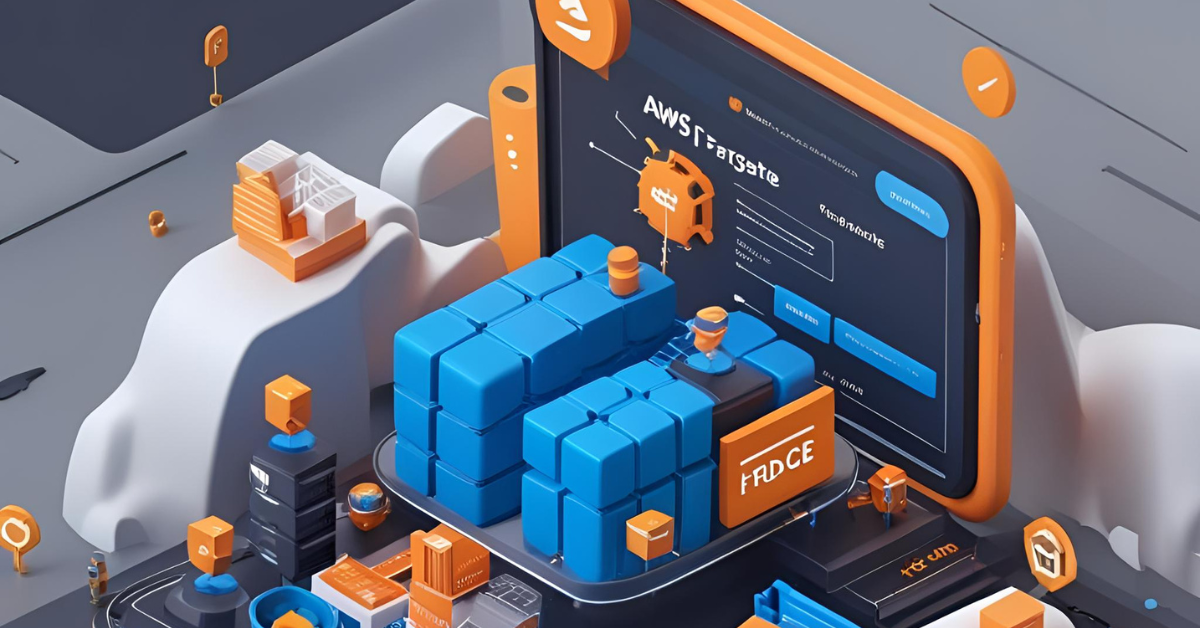
Overview of the Project
This project focuses on architecting and implementing a containerized backend infrastructure specifically designed for e-commerce applications. The core idea is to leverage AWS Fargate, a serverless compute engine for containers, in conjunction with Amazon Elastic Container Service (ECS) to run application services without managing servers. Data persistence will be handled by Amazon Relational Database Service (RDS), providing a managed, scalable, and highly available relational database.
The backend will typically consist of multiple, independently deployable services (microservices) such as:
- Product Catalog Service: Manages product information, inventory, and search.
- Order Management Service: Handles order creation, processing, and status updates.
- User Authentication Service: Manages user registration, login, and profiles.
- Payment Gateway Integration: Securely processes transactions.
An Application Load Balancer (ALB) will sit in front of these containerized services, intelligently distributing incoming traffic and ensuring high availability. The entire system will be configured for automatic scaling, meaning resources will dynamically adjust based on demand, ensuring optimal performance during peak sales events and cost efficiency during quieter periods.
Why It Matters
Building a scalable and resilient backend is paramount for any successful e-commerce venture. This project offers practical experience in creating a real-world application backend that addresses critical modern challenges:
- Handling Unpredictable Traffic: E-commerce experiences significant traffic spikes (e.g., Black Friday, flash sales, seasonal events). An auto-scaling backend ensures that your application remains responsive and available, preventing costly downtime and lost sales during these crucial periods.
- Containerization Benefits: Learning Docker and ECS/Fargate is essential for modern software development. Containers provide consistent development, testing, and production environments, eliminating "it works on my machine" issues and streamlining deployments.
- Microservices Architecture: This setup inherently promotes a microservices approach, which enhances development agility, allows independent teams to work on different services, and improves the fault isolation of your application.
- Reduced Operational Overhead: By using Fargate, you eliminate the need to provision, manage, and patch EC2 instances. This frees up engineering teams to focus on application logic rather than infrastructure maintenance. RDS similarly offloads database administration tasks.
- Cost Efficiency: Auto-scaling ensures that you only pay for the compute resources you actively use, avoiding over-provisioning during low-traffic periods.
This project teaches you how to build a robust, future-proof, and cost-effective foundation for any high-traffic web application.
Skills Required
To successfully implement this project, you'll need expertise across several technical domains:
- Docker:
- Writing
Dockerfiles to containerize backend applications. - Building, tagging, and pushing Docker images to a container registry.
- Understanding container networking and volumes.
- Writing
- SQL (or chosen RDS database query language):
- Designing efficient database schemas for e-commerce entities (products, orders, users).
- Writing SQL queries for data manipulation (CRUD operations) and complex joins.
- Basic understanding of database indexing and performance optimization.
- Load Balancing Concepts:
- Understanding how load balancers distribute traffic and perform health checks.
- Familiarity with Layer 7 (Application Load Balancer) features like path-based routing.
- Backend Development (Language/Framework Agnostic):
- Proficiency in a backend programming language (e.g., Python with FastAPI/Django, Node.js with Express, Java with Spring Boot).
- Designing and implementing RESTful APIs.
- Database integration using ORMs (Object-Relational Mappers) or direct drivers.
- AWS Core Concepts:
- Networking (VPC): Understanding subnets, security groups, and NACLs for secure network isolation.
- IAM: Managing fine-grained permissions for AWS services and users.
- Monitoring & Logging (CloudWatch): Setting up alarms and dashboards for application and infrastructure health.
- DevOps / CI/CD (Beneficial):
- Automating the build, test, and deployment process for containerized applications.
Tech Skills & Stack
The project leverages a powerful combination of AWS services and supporting technologies:
- AWS Fargate:
- Serverless Compute for Containers: The key component that allows you to run Docker containers without provisioning or managing underlying EC2 instances. You specify CPU and memory resources, and Fargate handles the server infrastructure.
- Amazon ECS (Elastic Container Service):
- Container Orchestration Service: Manages your Fargate tasks. You define
Task Definitions(blueprints for your containers), group them intoServices(which ensure a desired number of tasks are running), and deploy them to anECS Cluster. - Service Auto Scaling: Configured within ECS to automatically adjust the number of running tasks based on metrics like CPU utilization, memory utilization, or request count from the ALB.
- Container Orchestration Service: Manages your Fargate tasks. You define
- Amazon RDS (Relational Database Service):
- Managed Relational Database: Provides managed instances of popular database engines like MySQL or PostgreSQL (or Amazon Aurora, a high-performance, MySQL/PostgreSQL-compatible option).
- Automated Administration: Handles backups, patching, scaling, and replication, significantly reducing operational overhead.
- Multi-AZ Deployments: For high availability and automatic failover in case of an outage in one Availability Zone.
- Read Replicas: To scale read operations across multiple database instances.
- Amazon ALB (Application Load Balancer):
- Layer 7 Load Balancing: Distributes incoming HTTP/HTTPS traffic across multiple tasks in your ECS services.
- Path-Based Routing: Allows routing requests to different backend services based on URL paths (e.g.,
/productsto Product Service,/ordersto Order Service). - Health Checks: Monitors the health of individual tasks and routes traffic only to healthy ones.
- SSL Termination: Offloads SSL/TLS encryption and decryption from your backend services.
- Amazon ECR (Elastic Container Registry):
- Managed Docker Registry: A secure and highly available place to store your Docker images. ECS integrates seamlessly with ECR to pull images for your tasks.
- AWS VPC (Virtual Private Cloud):
- Network Isolation: Provides a logically isolated section of the AWS Cloud where you can launch AWS resources in a private, secure network.
- Subnets & Security Groups: Essential for defining network boundaries and controlling traffic flow to your containers and database.
- AWS CloudWatch:
- Monitoring & Logging: Collects metrics (CPU, memory, request counts) from ECS, ALB, and RDS.
- Alarms: Triggers scaling actions or notifications based on defined thresholds.
- Log Groups: Stores application logs from your containers for debugging and analysis.
- AWS IAM:
- Manages access control and permissions for all AWS resources involved, ensuring secure interactions between services and adherence to the principle of least privilege.
Benefits
This architecture delivers a comprehensive set of advantages crucial for modern e-commerce applications:
- High Availability:
- ALB distributes traffic and reroutes away from unhealthy instances.
- ECS ensures a desired number of tasks are running, automatically replacing failed ones.
- Multi-AZ RDS deployments provide database redundancy.
- Auto-Scaling:
- Dynamically adjusts compute capacity (number of Fargate tasks) based on real-time demand, ensuring consistent performance during traffic surges.
- Optimizes costs by scaling down resources during low traffic periods.
- Microservices-Ready:
- Encourages a decoupled architecture, allowing individual teams to develop, deploy, and scale services independently.
- Promotes fault isolation – a failure in one service is less likely to affect the entire application.
- Reduced Operational Overhead:
- Fargate eliminates the need for server management (patching, scaling underlying EC2 instances).
- RDS manages database backups, patching, and replication.
- Allows development teams to focus on application logic and features.
- Cost Efficiency:
- Pay-per-use model for Fargate and RDS, optimized by auto-scaling.
- Eliminates the cost of idle resources.
- Enhanced Security:
- Network isolation within VPC.
- Fine-grained access control with IAM roles for services.
- Managed security updates for Fargate and RDS.
- Improved Developer Productivity:
- Containers provide consistent environments across development, staging, and production.
- Standardized deployment workflows.
This project is a powerful example of leveraging AWS's cloud-native services to build a resilient, scalable, and operationally efficient backend for demanding applications like e-commerce.
Project 4: Scalable E-commerce Backend using AWS Fargate + RDS Codes:
🔗 View Project Code on GitHub🚀 Ready to turn your passion for data into real-world intelligence?
At Huebits, we don’t just teach Data Science — we train you to solve real problems with real data, using industry-grade tools that top tech teams trust.
From messy datasets to powerful machine learning models, you’ll gain hands-on experience building end-to-end AI systems that analyze, predict, and deliver impact.
🧠 Whether you’re a student, aspiring data scientist, or future AI architect, our Industry-Ready Data Science, AI & ML Program is your launchpad. Master Python, Pandas, Scikit-learn, Power BI, model deployment with Flask, and more — all by working on real-world projects that demand critical thinking and execution.
🎓 Next Cohort Starts Soon!
🔗 Join Now and secure your place in the AI revolution shaping tomorrow’s ₹1 trillion+ data-driven economy.
5. Secure File Upload System using S3 Pre-Signed URLs + Cognito

Overview of the Project
This project establishes a robust and secure mechanism for authenticated users to upload files to Amazon S3 using pre-signed URLs. Instead of directly exposing S3 bucket permissions or requiring users to configure AWS credentials on their devices, this system acts as a secure intermediary.
The workflow is as follows:
- User Authentication: A user first authenticates with AWS Cognito User Pools, establishing their identity.
- Request Pre-Signed URL: The authenticated user's client-side application (e.g., a web or mobile app) makes a request to a secure API Gateway endpoint. This request includes details about the file to be uploaded (e.g., filename, file type).
- Generate Pre-Signed URL: The API Gateway invokes an AWS Lambda function. This Lambda function, after verifying the user's authentication context (passed from Cognito via API Gateway), uses AWS SDK to generate a time-limited, single-use, pre-signed URL for a specific S3 object key (path and filename) in the target S3 bucket.
- Direct Upload to S3: The client receives this pre-signed URL and then uses it to directly upload the file to S3. This direct upload bypasses the API Gateway and Lambda for the large file transfer, offloading significant bandwidth and compute.
- Post-Upload Processing (Optional): Once the file lands in S3, an S3 event notification can trigger another Lambda function for further processing (e.g., virus scanning, image resizing, metadata extraction, indexing).
Why It Matters
Cloud storage is the ubiquitous norm for applications today, from document management systems to social media platforms and media streaming services. Securely handling user-generated content or critical uploads is paramount. This project teaches how to achieve authenticated and secure uploads in a cloud-native environment:
- Enhanced Security: It eliminates the need to embed long-lived AWS credentials on client devices or expose your S3 bucket directly to the internet. Pre-signed URLs provide temporary, granular access, expiring after a set period, significantly reducing the attack surface.
- Scalability: Direct-to-S3 uploads bypass your application server for the actual data transfer, offloading bandwidth and compute resources. S3 is designed for virtually unlimited scalability, effortlessly handling massive volumes of concurrent uploads.
- Improved User Experience: For users, direct uploads to S3 via pre-signed URLs often result in faster upload speeds, especially for large files, as the data travels directly to AWS's high-performance storage infrastructure.
- Cost Efficiency: By offloading the heavy lifting of file transfer from your Lambda functions and API Gateway, you reduce the compute time and bandwidth costs associated with proxied uploads.
- Fine-Grained Authorization: With Cognito Identity Pools and IAM, you can define sophisticated policies to ensure users can only upload to specific, designated paths within your S3 bucket (e.g.,
s3://your-bucket/user-id/). - Compliance: Implementing secure upload mechanisms is a critical component for meeting various industry regulations and compliance standards (e.g., HIPAA, GDPR, PCI DSS).
This project equips you with the knowledge to build the backbone of any application requiring secure and scalable file ingestion from users.
Skills Required
Successfully building this system requires a blend of identity, API, and cloud storage expertise:
- IAM (Identity and Access Management):
- Understanding IAM policies, roles, and trust relationships.
- Crafting fine-grained permissions for Lambda functions, API Gateway, and crucially, for the temporary credentials issued by Cognito Identity Pools to access S3.
- Leveraging IAM conditions for path-based or user-specific S3 access.
- Authentication Systems (AWS Cognito):
- Configuring Cognito User Pools for user sign-up, sign-in, password management, and MFA.
- Setting up Cognito Identity Pools (Federated Identities) to exchange authenticated user tokens for temporary AWS credentials, which are then used by the Lambda to sign the S3 URL.
- Understanding the flow of user authentication and token exchange.
- API Development:
- Designing RESTful API endpoints using API Gateway.
- Configuring API Gateway methods (e.g., POST) with Lambda proxy integration.
- Implementing Cognito Authorizers on API Gateway to secure endpoints, ensuring only authenticated users can request pre-signed URLs.
- Lambda Function Development:
- Writing serverless functions (e.g., in Python, Node.js) to interact with AWS SDK.
- Parsing API Gateway event payloads and constructing appropriate responses.
- Handling potential errors and logging.
- Amazon S3 Basics:
- Understanding S3 bucket creation, object storage, and versioning.
- Configuring CORS (Cross-Origin Resource Sharing) policies on your S3 bucket to allow direct browser uploads from your frontend domain.
- Knowledge of S3 event notifications for post-upload processing.
- Frontend Development (JavaScript/Web Frameworks):
- Making HTTP requests (e.g., using
fetchorXMLHttpRequest) to API Gateway. - Handling file selection and using the received pre-signed URL to perform a direct
PUTrequest to S3. - Displaying upload progress and status.
- Making HTTP requests (e.g., using
Tech Skills & Stack
The architecture relies heavily on integrated AWS services:
- Amazon S3:
- Upload Bucket: The primary storage location for all uploaded files. Configured with specific CORS policies to allow direct browser uploads and potentially bucket policies for overall security.
- S3 Event Notifications: Can be configured to trigger Lambda functions (or SQS/SNS) upon object creation for post-upload processing.
- AWS Cognito:
- User Pools: Manages all user directories, authentication flows (sign-up, sign-in, MFA), and user attributes. Provides JSON Web Tokens (JWTs) upon successful authentication.
- Identity Pools (Federated Identities): Bridges User Pools to AWS services. It exchanges the JWT from a User Pool for temporary AWS credentials (IAM roles), which specify what AWS resources the authenticated user is allowed to access.
- Amazon API Gateway:
- REST API: Provides a secure, scalable, and public-facing endpoint for client applications to request pre-signed S3 URLs.
- Cognito Authorizer: Integrates directly with your Cognito User Pool to validate incoming requests, ensuring only authenticated users with valid tokens can hit the Lambda function.
- Request/Response Mapping: Can transform incoming requests and outgoing responses.
- AWS Lambda:
GeneratePresignedUrlFunction: This is the core logic that receives authenticated requests from API Gateway. It extracts user context (e.g., user ID from the Cognito authorizer), constructs the S3 object key (e.g.,uploads/user-id/filename.ext), and uses the AWS SDK'sgenerate_presigned_urlmethod to create the temporary URL withPutObjectpermission.PostUploadProcessorFunction(Optional): Triggered bys3:ObjectCreatedevents, this Lambda can perform tasks like:- Virus scanning (e.g., integrating with a third-party AV service).
- Image/video transcoding or resizing.
- Extracting metadata from documents.
- Updating a database (e.g., DynamoDB or RDS) with file information.
- Triggering other workflows (e.g., machine learning analysis).
- AWS IAM:
- Lambda Execution Role: Grants the
GeneratePresignedUrlFunctionpermissions to invokes3:PutObjecton the target S3 bucket vias3:PutObject. - Cognito Identity Pool Roles: Defines the precise S3 permissions that will be granted to authenticated users (e.g.,
s3:PutObjectonly onarn:aws:s3:::your-bucket/user-id/*), which are then enforced by the pre-signed URL.
- Lambda Execution Role: Grants the
- Client-Side Application (e.g., HTML/JavaScript, React, Angular, Vue, mobile app): Handles user authentication with Cognito SDKs, makes API calls to API Gateway, and performs the direct PUT operation to S3 using the received pre-signed URL.
Benefits
This architecture provides a secure, scalable, and efficient file upload solution:
- Enhanced Security:
- No AWS Credentials on Client: Clients never possess long-lived AWS credentials.
- Temporary Access: Pre-signed URLs are time-limited, expiring automatically.
- Granular Permissions: IAM policies ensure pre-signed URLs grant only the necessary permissions (e.g.,
s3:PutObjectfor a specific object key). - Authenticated Access: Cognito ensures only legitimate users can initiate the upload process.
- Scalable Uploads:
- Direct-to-S3: The actual file transfer occurs directly between the client and S3, bypassing your application's compute resources, allowing massive concurrent uploads.
- Serverless Components: Lambda and API Gateway scale automatically to handle fluctuations in request volume for URL generation.
- Keyless Client Access:
- Simplifies client-side development as the client only needs to interact with your API endpoint and the pre-signed URL, not manage complex AWS SDK configurations or credentials.
- Improved User Experience:
- Faster, more reliable uploads, especially for large files, as data is streamed directly to AWS's highly optimized S3 infrastructure.
- Cost Efficiency:
- Reduced compute and bandwidth costs for your API Gateway and Lambda functions, as they are not processing the file stream itself.
- Leverages S3's extremely cost-effective storage.
- Simplified Backend Logic:
- The backend's responsibility for uploads is reduced to authorization and URL generation, allowing developers to focus on core application features.
Project 5: Secure File Upload System using S3 Pre-Signed URLs + Cognito Codes:
🔗 View Project Code on GitHub6. Chatbot with Lex + Lambda + DynamoDB

Overview of the Project
This project aims to develop a sophisticated intelligent conversational assistant (chatbot) capable of understanding user queries in natural language (text or voice) and performing specific tasks. It integrates Amazon Lex, Amazon's service for building conversational interfaces, with AWS Lambda for backend business logic, and Amazon DynamoDB for maintaining conversation context and persistent data.
The chatbot's core functionality revolves around:
- Intent Recognition: Identifying the user's goal (e.g., "book a flight," "check order status," "get support").
- Slot Elicitation: Gathering all necessary pieces of information (slots) to fulfill the intent (e.g., flight destination, order ID, issue description).
- Fulfillment: Executing the required business logic, often by calling external APIs or interacting with databases, to complete the user's request.
Common use cases for such a chatbot include:
- Customer Support: Answering FAQs, providing information, routing complex queries to human agents.
- E-commerce: Checking order status, initiating returns, providing product information.
- Booking Systems: Reserving appointments, flights, or hotel rooms.
- Lead Generation: Collecting user information and preferences.
- Information Retrieval: Providing quick access to specific data points.
Why It Matters
In today's digital landscape, users expect seamless, intuitive interactions. Chatbots offer a powerful way to enhance user experience and automate routine tasks. This project teaches you how to build a smart bot that integrates into real applications, demonstrating skills highly sought after in the market:
- Enhanced User Experience: Provides a natural, conversational way for users to interact with applications, improving accessibility and engagement.
- 24/7 Availability: Chatbots can provide immediate assistance around the clock, improving customer satisfaction and support responsiveness outside of business hours.
- Operational Efficiency & Cost Savings: By automating routine queries and tasks, chatbots significantly reduce the workload on human customer service agents, lowering operational costs and allowing agents to focus on more complex issues.
- Scalability: Designed with serverless AWS components, the chatbot can effortlessly scale to handle thousands of concurrent conversations without manual provisioning.
- Instant Gratification: Users receive immediate responses and task completion, leading to higher satisfaction.
- Modern Application Integration: Learn how to embed conversational AI into websites, mobile apps, messaging platforms (Slack, Facebook Messenger), or even voice channels (Amazon Connect).
- Data Collection & Insights: Chatbot interactions provide valuable data on user needs and common queries, which can inform product development and service improvements.
Skills Required
Building an intelligent chatbot requires a blend of natural language processing, backend development, and cloud integration skills:
- NLP (Natural Language Processing) & Conversational Design:
- Defining intents and their associated utterances (example phrases users might say).
- Identifying and configuring slots (parameters) required for each intent.
- Designing effective conversation flows, including prompts for slot elicitation, confirmation prompts, and error handling.
- Understanding concepts like disambiguation and context management in multi-turn dialogues.
- Bot Training & Iteration:
- The ability to test, refine, and iterate on chatbot responses and understanding based on user interactions.
- Analyzing conversational logs to improve bot performance.
- REST APIs:
- Understanding how to make HTTP requests to external services from Lambda functions for fulfillment (e.g., integrating with a booking system, a CRM, or a payment gateway).
- Potentially exposing the chatbot functionality via a custom REST API endpoint using API Gateway for custom client integration.
- Lambda Function Development:
- Writing event-driven serverless code in languages like Python or Node.js to implement the business logic for each intent's fulfillment.
- Handling input/output structures from Lex, including slot values and session attributes.
- Implementing error handling and robust logging.
- Database Interaction:
- Designing DynamoDB table schemas for storing conversation context (session attributes) or persistent application data (e.g., booking details, user preferences).
- Performing efficient read and write operations to DynamoDB from Lambda.
- AWS Ecosystem Familiarity:
- IAM for managing permissions between Lex, Lambda, DynamoDB, and other integrated services.
- CloudWatch for monitoring Lambda executions, Lex logs, and debugging.
Tech Skills & Stack
The project leverages a powerful serverless architecture on AWS for optimal scalability and manageability:
- Amazon Lex:
- Bot Definition: The primary service for defining the chatbot's conversational model.
- Intents: Representing user goals (e.g.,
BookHotel,GetOrderStatus,ProvideFeedback). - Utterances: Sample phrases that map to specific intents.
- Slots: The pieces of information (entities) Lex needs to collect to fulfill an intent (e.g.,
City,CheckInDate,OrderId). Lex handles the natural language understanding (NLU) and dialogue management, automatically prompting users for missing slots. - Fulfillment Lambda: Integrates directly with a Lambda function to execute the business logic once all necessary slots for an intent are gathered.
- AWS Lambda:
- Fulfillment Lambda Function: The core compute component that handles the business logic for each intent. When Lex successfully elicits all required slots for an intent, it invokes this Lambda. The Lambda can then:
- Interact with DynamoDB to store or retrieve session context or persistent data.
- Call external APIs (e.g., a flight booking system, an internal inventory API, a CRM).
- Perform complex calculations or data validations.
- Return the response to Lex, which then delivers it to the user.
- Fulfillment Lambda Function: The core compute component that handles the business logic for each intent. When Lex successfully elicits all required slots for an intent, it invokes this Lambda. The Lambda can then:
- Amazon DynamoDB:
- Session Management: Can be used to store conversation context (e.g.,
sessionAttributesfrom Lex) for multi-turn dialogues, ensuring continuity across interactions. - Persistent Data Storage: Stores application-specific data required by the chatbot, such as user profiles, booking information, FAQs, product details, or support ticket status. Its fast, low-latency performance makes it ideal for real-time chat interactions.
- Session Management: Can be used to store conversation context (e.g.,
- Amazon API Gateway (Optional but Common):
- Frontend Integration: While Lex has direct integrations with many messaging platforms, API Gateway is used to expose a REST endpoint if you're building a custom web or mobile chat interface. The client application interacts with API Gateway, which then passes the user's input to Lex, and returns Lex's response to the client.
- Authentication: Can be secured using Cognito authorizers to ensure only authenticated users can interact with your chatbot.
- AWS CloudWatch:
- Provides comprehensive logging and monitoring for Lambda functions and Lex bot interactions, crucial for debugging, performance analysis, and identifying areas for bot improvement.
- AWS IAM (Identity and Access Management):
- Defines the precise permissions required for Lex to invoke Lambda, Lambda to access DynamoDB or other APIs, and API Gateway to interact with Lex.
Benefits
This architecture provides a powerful and flexible foundation for conversational AI:
- Conversational Interface: Offers a natural, human-like way for users to interact with your services, leading to a more intuitive and satisfying experience.
- 24/7 Automated Support & Assistance: Provides instant responses and automates routine tasks, reducing reliance on human agents and improving customer support availability around the clock.
- Easy Integration: Lex's native integrations with popular messaging platforms (e.g., Facebook Messenger, Slack, Twilio SMS) and its API make it straightforward to embed the chatbot into various applications and channels.
- Scalability: All core AWS components (Lex, Lambda, DynamoDB, API Gateway) are serverless and scale automatically to handle varying loads, from a few conversations to thousands concurrently, without manual provisioning.
- Cost-Effective: Leverages a pay-per-use model, making it economical for businesses of all sizes as you only pay for the resources consumed during actual interactions.
- Operational Efficiency: Automates repetitive tasks, freeing up human agents for more complex or empathetic interactions, optimizing workforce allocation.
- Data-Driven Insights: Chatbot interactions generate valuable data on user queries, common problems, and preferences, which can be analyzed to refine services, products, or marketing strategies.
Your AWS Lambda function code for the Lex Chatbot has been packaged and is ready for deployment.
📦 Download Lambda Deployment Package
This ZIP file contains:
index.js: Node.js Lambda function that handles Lex'sBookAppointmentintent, stores booking info in DynamoDB, and returns a fulfillment message.
Project 6: Chatbot with Lex + Lambda + DynamoDB Codes:
🔗 View Project Code on GitHubYour full project scaffold is ready! 🎯
It includes:
- 🧱 Terraform Script
✅main.tfto provision:- DynamoDB table
- Lambda role
- Lambda function for Lex fulfillment
- 🧠 Lex Bot Configuration
✅appointment_bot.jsondefining:- An
AppointmentBotwithBookAppointmentintent - Slot elicitation for
NameandDate - Lambda fulfillment trigger
- An
- 🎨 Frontend Chat UI
✅index.htmlto send messages directly to Lex via AWS SDK- Includes basic UI
- JavaScript to initialize Lex client and handle messages
📦 Download the complete folder here
🚀 Ready to turn your passion for data into real-world intelligence?
At Huebits, we don’t just teach Data Science — we train you to solve real problems with real data, using industry-grade tools that top tech teams trust.
From messy datasets to powerful machine learning models, you’ll gain hands-on experience building end-to-end AI systems that analyze, predict, and deliver impact.
🧠 Whether you’re a student, aspiring data scientist, or future AI architect, our Industry-Ready Data Science, AI & ML Program is your launchpad. Master Python, Pandas, Scikit-learn, Power BI, model deployment with Flask, and more — all by working on real-world projects that demand critical thinking and execution.
🎓 Next Cohort Starts Soon!
🔗 Join Now and secure your place in the AI revolution shaping tomorrow’s ₹1 trillion+ data-driven economy.
7. Personalized News Recommender using Personalize

Overview of the Project
This project focuses on implementing a sophisticated personalized news recommender system for a digital news platform. The core objective is to deliver tailored news feeds to individual users, dynamically adapting to their unique interests and evolving behavioral patterns.
The system works by:
- Collecting Data: Ingesting various types of data into AWS, including:
- User Data: Anonymous or identified user profiles (e.g., demographics, preferences).
- Item Data (News Articles): Metadata about the news articles (e.g., categories, tags, authors, publish date, keywords).
- Interaction Data: The most crucial piece – recording how users interact with news articles (e.g., clicks, reads, shares, time spent on an article, explicit likes/dislikes).
- Training Recommendation Models: AWS Personalize is used to ingest this data. Personalize, a fully managed machine learning service, then trains custom recommendation models (called "solutions" based on "recipes") tailored to the specific user behavior and item characteristics.
- Generating Recommendations: Once trained, these models are deployed as real-time recommendation "campaigns." When a user visits the news platform, their past interactions and preferences are fed to the Personalize campaign, which instantly generates a list of highly relevant news articles.
- Delivering Personalized Feeds: These recommendations are then integrated into the frontend of the news application, providing each user with a unique and engaging news feed.
Why It Matters
In today's age of information overload, getting relevant content to users is paramount for digital products. Recommender systems are not just a feature; they are the heart of engagement for platforms like news sites, streaming services, and e-commerce. For news specifically, this project matters because:
- Combating Information Overload: Users are bombarded with vast amounts of content. A recommender system acts as a smart filter, cutting through the noise to deliver what's most relevant and valuable to them.
- Driving User Engagement & Retention: When users consistently find content they love, they spend more time on the platform, return more frequently, and are less likely to churn. This directly translates to increased user stickiness and loyalty.
- Monetization Opportunities: Highly personalized content can lead to increased ad click-through rates, higher conversion for premium subscriptions, and more effective cross-promotion of content.
- Enhanced Content Discovery: Beyond just showing what's popular, recommenders can help users discover niche topics or diverse perspectives they might not have actively searched for.
- Competitive Advantage: In a crowded digital news landscape, delivering a superior, personalized experience can be a key differentiator that attracts and retains a larger audience.
- Operational Efficiency: Personalize abstracts the complexities of building and maintaining a sophisticated machine learning infrastructure for recommendations, allowing development teams to focus on core product features.
Skills Required
Implementing a personalized news recommender system involves a mix of data engineering, machine learning understanding, and cloud integration:
- Data Preprocessing & Engineering:
- Understanding different data types for Personalize (Users, Items, Interactions) and their required schemas.
- Skills in extracting, transforming, and loading (ETL) raw interaction logs (e.g., website clicks, reading duration) into the specific formats required by Personalize (CSV files in S3).
- Handling data cleaning, de-duplication, and ensuring data quality.
- Managing timestamps and sequence data.
- Machine Learning Concepts (focused on Recommenders):
- Familiarity with collaborative filtering, content-based filtering, and hybrid approaches.
- Understanding concepts like the "cold start problem" (new users/items) and strategies to address it.
- Ability to evaluate recommendation quality (e.g., precision, recall, hit rate, diversity).
- While Personalize automates much, understanding how to select appropriate "recipes" (algorithms) and interpret model metrics is crucial.
- Recommendation Logic & Integration:
- Designing the application flow for requesting and displaying recommendations.
- Implementing logic to handle various recommendation scenarios (e.g., "For You" feed, "Related Articles," "Trending News").
- Strategies for A/B testing different recommendation models or delivery methods.
- AWS Services Expertise:
- S3 for secure and scalable data storage.
- Lambda for backend API logic, data ingestion pipelines, and event handling.
- IAM for managing access permissions securely across services.
- CloudWatch for monitoring and logging.
- API Integration:
- Making API calls to AWS Personalize campaigns to retrieve recommendations.
- Setting up API Gateway endpoints if the recommendation service is exposed via a custom API.
Tech Skills & Stack
This project heavily relies on AWS's serverless and machine learning services:
- AWS Personalize:
- Dataset Groups: The logical container for all your personalization resources.
- Datasets (Users, Items, Interactions): Stores the raw data required for training.
- Users Dataset: Contains user attributes (e.g., age, location, subscription tier).
- Items Dataset: Contains news article metadata (e.g.,
ITEM_ID,CATEGORY,PUBLISH_DATE,AUTHORS). - Interactions Dataset: The most critical, containing
USER_ID,ITEM_ID,TIMESTAMP, andEVENT_TYPE(e.g.,click,read,share).
- Solutions/Recipes: The underlying machine learning algorithms. Key recipes for news include:
USER_PERSONALIZATION: For recommending items to users based on their historical interactions.PERSONALIZED_RANKING: To re-rank a given list of items for a specific user.SIMS(Similar Items): To recommend articles similar to one the user is currently viewing.
- Solution Versions: Trained models based on a specific recipe and dataset.
- Campaigns: Deployed recommendation endpoints that provide real-time inference, allowing your application to query for recommendations with low latency.
- Event Trackers: For sending real-time interaction data directly from your application to Personalize, enabling models to learn from immediate user behavior.
- Amazon S3:
- Data Lake: Used as a landing zone for raw interaction logs and as the source for batch data imports into Personalize datasets.
- Preprocessed Data Storage: Stores clean, formatted data ready for Personalize.
- AWS Lambda:
- Data Ingestion Function: Triggered by new log entries (e.g., from CloudWatch Logs, Kinesis Firehose) or scheduled events to process and upload interaction data to Personalize's batch import or real-time event tracker.
- Recommendation API Function: Exposed via API Gateway. It receives a user ID, queries the appropriate Personalize campaign, and returns the recommended news articles to the client application.
- Post-Interaction Processing: Can handle additional logic after an event is tracked (e.g., updating user profiles).
- AWS CloudWatch:
- Monitors the performance and health of Lambda functions and Personalize campaigns.
- Provides logging for debugging and auditing the recommendation process.
- Amazon Kinesis Data Firehose (Optional but Recommended for real-time data):
- Can act as an intermediary for streaming raw interaction data from your application to S3, where it can then be processed and uploaded to Personalize. Provides buffering and automatic delivery.
- Amazon API Gateway:
- Exposes a secure REST endpoint for the Lambda function that retrieves recommendations from Personalize, allowing web or mobile applications to consume the personalized feeds.
- AWS IAM:
- Manages permissions for Personalize to access S3 data, for Lambda to invoke Personalize campaigns, and for any other service interactions, ensuring secure data flow.
Benefits
This personalized news recommender system provides significant advantages for both the platform and its users:
- Hyper-personalization: Delivers news feeds that are uniquely tailored to each user's individual interests, reading history, and even real-time behavior, moving beyond generic recommendations.
- Improved User Engagement: Leads to higher click-through rates, longer session durations, increased page views, and more frequent return visits, as users consistently find relevant and compelling content.
- Easy A/B Testing & Optimization: AWS Personalize natively supports A/B testing of different recommendation recipes or campaign configurations, allowing for continuous improvement and optimization of recommendation quality.
- Reduced Development Complexity: Personalize is a fully managed service that abstracts away the complexities of building, training, and deploying machine learning models, allowing development teams to focus on integrating recommendations into the application.
- Scalability & Performance: Personalize campaigns scale automatically to handle fluctuating recommendation request volumes with low latency, ensuring a smooth user experience even during peak traffic.
- Cost-Effectiveness: A pay-per-recommendation model ensures you only pay for what you use, optimizing costs for fluctuating demand.
- Enhanced Content Discovery: Helps users discover new and diverse articles they might not have found through traditional navigation, broadening their reading horizons.
- Monetization Opportunities: More engaged users are more likely to interact with ads or subscribe to premium content, directly impacting revenue.
Project 7: Personalized News Recommender using Personalize Codes:
🔗 View Project Code on GitHub8. CI/CD Pipeline with CodePipeline + CodeBuild + CodeDeploy
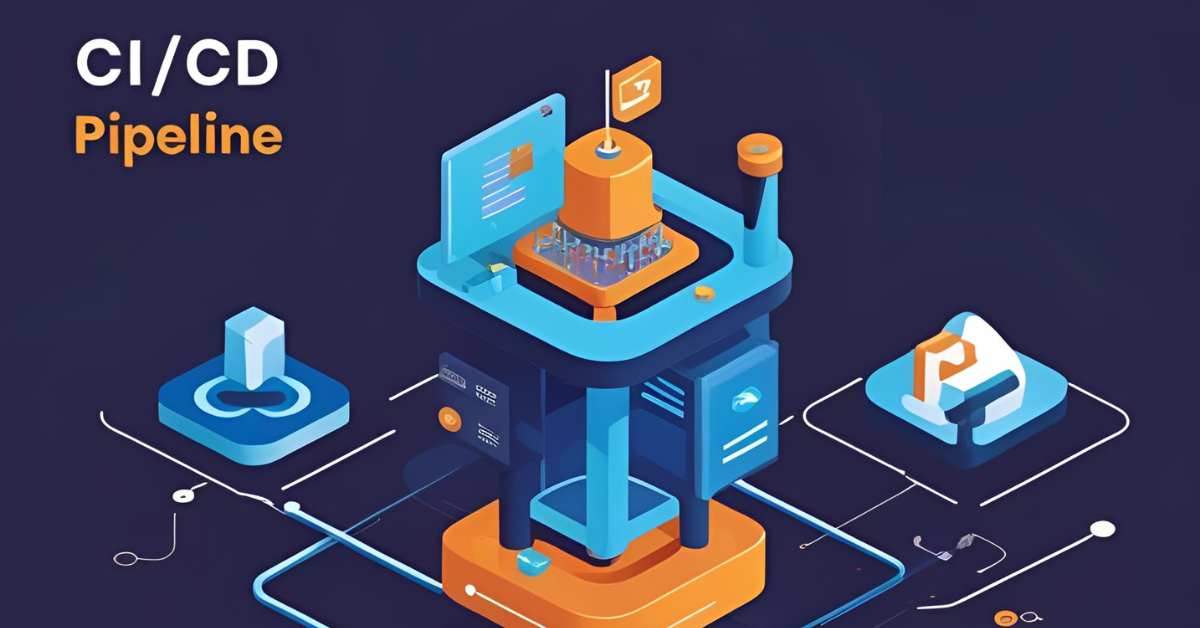
Overview of the Project
This project focuses on establishing a robust Continuous Integration (CI) and Continuous Delivery/Deployment (CD) pipeline that fully automates the software release cycle. From the moment a developer commits code to the repository, the pipeline springs into action, carrying out a series of predefined stages to deliver the application reliably to production (or any target environment).
The typical stages of this automated pipeline are:
- Source Stage: Detects changes in the source code repository.
- Build Stage: Compiles the code, runs unit tests, and packages the application into deployable artifacts (e.g., Docker images, JAR files, Lambda zip files).
- Test Stage: Executes automated integration tests, functional tests, and potentially security scans.
- Deploy Stage: Deploys the built and tested application artifacts to the target infrastructure (e.g., EC2 instances, ECS/Fargate containers, Lambda functions).
This entire workflow is orchestrated by AWS CodePipeline, with specific tasks handled by other AWS developer tools.
Why It Matters
In today's fast-paced digital world, DevOps is non-negotiable. Manual software deployments are slow, error-prone, and don't scale. A well-implemented CI/CD pipeline is the backbone of modern software delivery, offering immense benefits:
- Accelerated Time-to-Market: Deliver new features, bug fixes, and updates to users much faster and more frequently.
- Improved Reliability & Consistency: Automated processes eliminate human error, ensuring that deployments are consistent and repeatable across all environments (development, staging, production).
- Early Detection of Issues: Continuous integration and automated testing mean that bugs and integration problems are caught early in the development cycle, when they are cheapest and easiest to fix.
- Faster Feedback Loops: Developers receive immediate feedback on their code changes, allowing for rapid iteration and correction.
- Reduced Risk: Smaller, more frequent deployments inherently carry less risk than large, infrequent "big bang" releases. Rollbacks, if necessary, are also simpler.
- Enhanced Collaboration: Fosters a culture of collaboration between development and operations teams by standardizing the release process and improving visibility.
- Operational Efficiency: Frees up valuable developer and operations time by automating repetitive tasks, allowing teams to focus on innovation.
This project is foundational for anyone looking to implement modern, agile software development practices on AWS.
Skills Required
Building and managing a CI/CD pipeline requires a combination of development, operations, and cloud-specific skills:
- Git & Version Control:
- Proficiency in Git commands (commit, push, pull, branch, merge).
- Understanding branching strategies (e.g., GitFlow, Trunk-Based Development).
- Repository management concepts.
- Automation Principles:
- A strong understanding of the philosophy behind automating repeatable tasks to reduce manual effort and improve reliability.
- Scripting (Bash, Python) for custom build or deployment steps.
- YAML Scripting:
- Crucial for defining the build steps in
buildspec.yml(for CodeBuild) and deployment instructions inappspec.yml(for CodeDeploy). - Often used for defining the CodePipeline itself through Infrastructure as Code (IaC) tools.
- Crucial for defining the build steps in
- Infrastructure as Code (IaC):
- Familiarity with AWS CloudFormation, AWS CDK, or Terraform for defining and managing the pipeline infrastructure itself (repositories, build projects, deployment groups, and the pipeline orchestration).
- Build Tools & Testing Frameworks:
- Experience with language-specific build tools (e.g., Maven, Gradle for Java; npm/Yarn for Node.js; pip/Poetry for Python).
- Knowledge of unit testing frameworks (e.g., JUnit, Pytest, Jest) and how to execute them in an automated environment.
- Concepts of integration testing and end-to-end testing.
- Basic Cloud & Networking:
- Understanding AWS services like S3 (for artifacts), CloudWatch (for logging/monitoring).
- Basic networking concepts like security groups, VPCs, if deploying to EC2 or ECS.
Tech Skills & Stack
This project will leverage a set of integrated AWS Developer Tools designed for CI/CD:
- AWS CodePipeline:
- The Orchestration Engine: Defines and manages the various stages of the release pipeline (Source, Build, Test, Deploy).
- Automated Triggers: Can be configured to automatically start the pipeline upon code pushes to CodeCommit (or other Git repositories), S3 object changes, or scheduled events.
- Artifact Store: Uses an S3 bucket to securely store and pass artifacts (output from one stage, input to the next) between different stages of the pipeline.
- AWS CodeCommit:
- Managed Source Control: A secure, highly scalable, fully managed Git repository service. Seamlessly integrates with CodePipeline as a source stage.
- Supports standard Git commands and workflows.
- AWS CodeBuild:
- Managed Build Service: Compiles source code, runs tests (unit, integration), and produces deployable artifacts.
buildspec.yml: A YAML file placed in your source repository that defines the build commands, environment variables, and artifact specifications for CodeBuild.- Supports various programming languages and runtimes (Java, Node.js, Python, Go, .NET, etc.).
- Scales automatically based on build concurrency.
- AWS CodeDeploy:
- Deployment Automation Service: Automates application deployments to a variety of compute services.
- Deployment Targets: Can deploy to Amazon EC2 instances, AWS Lambda functions, Amazon ECS/AWS Fargate services, and even on-premises servers.
- Deployment Strategies: Supports various deployment patterns like in-place updates, blue/green deployments (for zero downtime), canary deployments, all-at-once, and one-at-a-time, allowing for fine-grained control over rollout risk.
appspec.yml: A YAML file that defines the source files to be copied, destinations, and lifecycle event hooks (scripts to run before/after installation, validation, etc.).
- Amazon S3 (Simple Storage Service):
- Artifact Store: CodePipeline uses S3 buckets as its default artifact store, securely passing inputs and outputs between stages.
- Deployment Bundles: CodeDeploy pulls the application revision (the deployable artifact) from S3.
- AWS IAM (Identity and Access Management):
- Crucial for defining the service roles and permissions for CodePipeline, CodeBuild, and CodeDeploy to interact with each other and with the target deployment resources (e.g., EC2 instances, S3 buckets, ECR repositories).
- AWS CloudWatch:
- Monitoring & Logging: Collects logs from CodeBuild and CodeDeploy, and provides metrics for pipeline execution status.
- Alarms: Can be configured to notify teams of pipeline failures or stalled executions.
- AWS CodeArtifact (Optional): A fully managed artifact repository service that makes it easy for organizations to securely store, publish, and share software packages. Integrates with CodeBuild.
Benefits
Implementing this CI/CD pipeline provides a comprehensive set of benefits for modern software delivery:
- Fast & Frequent Deployments (Rapid Release Cycles): Accelerates the release cadence, allowing businesses to iterate quickly and respond to market changes.
- Minimal Manual Effort: Automates repetitive tasks, reducing human error, operational burden, and freeing up engineers for more complex and innovative work.
- Full Release Control & Visibility: Provides a centralized dashboard (CodePipeline console) to monitor pipeline status, track deployments, review logs, and audit changes, offering complete transparency.
- Improved Code Quality: Automated testing at each stage ensures that defects are caught early, before they reach production, leading to more stable and reliable applications.
- Increased Reliability & Consistency: Standardized, automated deployment processes ensure consistent environments and configurations, minimizing "works on my machine" issues and deployment-related failures.
- Faster Feedback Loop for Developers: Immediate feedback on code changes means developers can quickly identify and fix issues, accelerating development cycles.
- Reduced Risk of Deployment Failures: Smaller, incremental deployments are inherently less risky, and CodeDeploy's deployment strategies (like blue/green) minimize downtime and simplify rollbacks.
- Enhanced DevOps Culture & Collaboration: Fosters a more collaborative and efficient relationship between development and operations teams by automating shared responsibilities.
- Scalability: The AWS services used are designed for cloud-scale, allowing the pipeline to easily adapt to increasing project complexity, team size, and deployment frequency.
Project 8: CI/CD Pipeline with CodePipeline + CodeBuild + CodeDeploy Codes:
🔗 View Project Code on GitHub🚀 Ready to turn your passion for data into real-world intelligence?
At Huebits, we don’t just teach Data Science — we train you to solve real problems with real data, using industry-grade tools that top tech teams trust.
From messy datasets to powerful machine learning models, you’ll gain hands-on experience building end-to-end AI systems that analyze, predict, and deliver impact.
🧠 Whether you’re a student, aspiring data scientist, or future AI architect, our Industry-Ready Data Science, AI & ML Program is your launchpad. Master Python, Pandas, Scikit-learn, Power BI, model deployment with Flask, and more — all by working on real-world projects that demand critical thinking and execution.
🎓 Next Cohort Starts Soon!
🔗 Join Now and secure your place in the AI revolution shaping tomorrow’s ₹1 trillion+ data-driven economy.
9. Serverless URL Shortener with API Gateway + DynamoDB
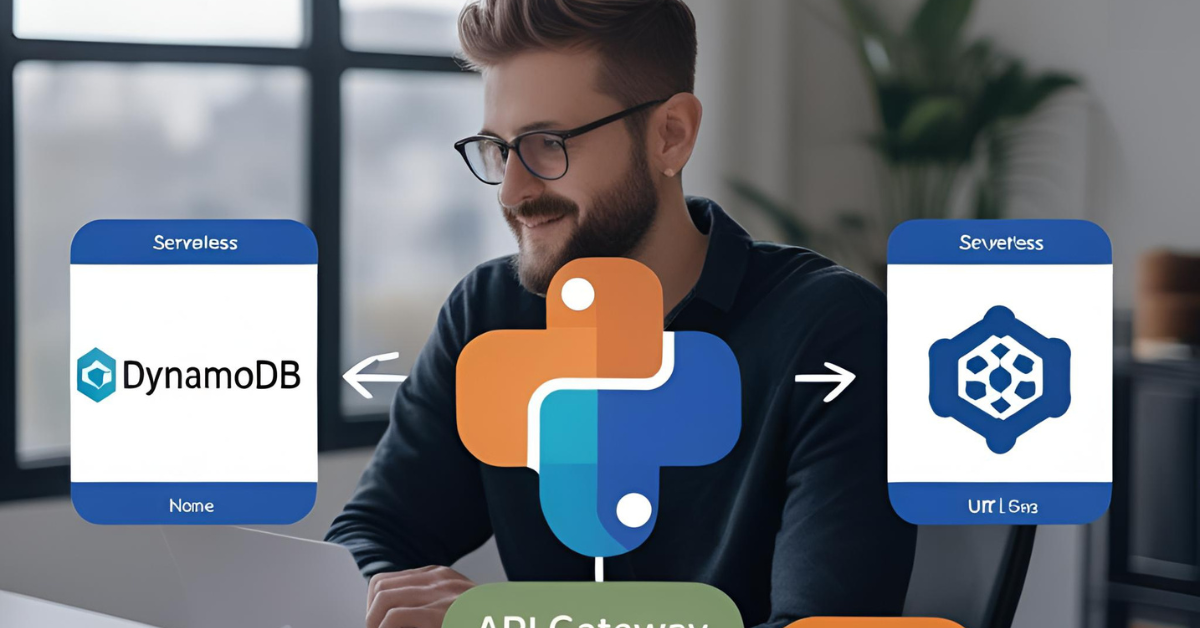
Overview of the Project
This project aims to develop a lightweight and scalable URL shortening service, similar to bit.ly or tinyurl.com, entirely using serverless technologies on AWS. The core functionality is to take a long URL as input and generate a short, unique URL that redirects to the original. A key feature is the inclusion of basic usage tracking, allowing you to collect analytics on how often shortened URLs are accessed.
The core workflow is as follows:
- URL Shortening Request: A user submits a long URL to a secure API Gateway endpoint.
- Generate Short Code: An AWS Lambda function receives the request, generates a short, unique code (e.g., a random string), and stores the mapping between the short code and the original URL in Amazon DynamoDB.
- Return Shortened URL: The Lambda function returns the shortened URL (e.g.,
https://yourdomain.com/shortcode) to the user. - Redirection: When a user visits a shortened URL, a different API Gateway endpoint receives the request.
- Lookup Original URL: Another Lambda function retrieves the original URL from DynamoDB based on the short code.
- Redirect User: The Lambda function returns an HTTP 301 redirect response, sending the user's browser to the original URL.
- Usage Tracking (Optional): The redirect Lambda can also increment a counter in DynamoDB for each short URL access to track usage statistics.
Why It Matters
This project showcases the elegance and efficiency of serverless architectures for building production-ready applications. It demonstrates how to leverage AWS services to create a highly scalable, cost-effective, and operationally simple URL shortening service:
- Scalability: Serverless architectures (API Gateway, Lambda, DynamoDB) scale automatically to handle fluctuating traffic, from a few requests to millions per day, without any manual intervention.
- No Server Management: With Lambda and DynamoDB, there are no servers to provision, manage, patch, or scale. This significantly reduces operational overhead.
- Cost Efficiency: You only pay for the resources you consume. Lambda functions are billed in 100ms increments, and DynamoDB's on-demand pricing means you pay only for actual read/write capacity.
- High Availability: AWS services are designed for high availability and fault tolerance.
- Simple Deployment & Maintenance: Serverless applications are typically easier to deploy and update than traditional server-based applications.
- Real-World Application: URL shortening is a common and practical web application, making this project directly applicable to many scenarios.
- Understanding Core Serverless Concepts: This project provides a solid foundation for understanding how to build RESTful APIs, interact with NoSQL databases, and implement business logic using Lambda functions in a serverless context.
Skills Required
Building this serverless URL shortener requires expertise in API development, NoSQL database design, and serverless computing:
- RESTful APIs:
- Designing API endpoints (e.g.,
POST /urlsfor shortening,GET /{shortcode}for redirecting). - Understanding HTTP methods, request/response structures, and status codes.
- Designing API endpoints (e.g.,
- NoSQL Database Design (DynamoDB):
- Designing a simple and efficient DynamoDB table schema to store the mapping between short codes and original URLs.
- Understanding primary keys and potentially secondary indexes for efficient lookups.
- Lambda Function Development:
- Writing serverless functions in languages like Python or Node.js to implement the core business logic:
- Generating short codes (e.g., using random string generation).
- Interacting with DynamoDB (put and get operations).
- Constructing HTTP redirect responses.
- Implementing usage tracking (optional).
- Writing serverless functions in languages like Python or Node.js to implement the core business logic:
- Basic Cloud & Networking:
- Understanding how API Gateway integrates with Lambda.
- Basic networking concepts like DNS (for setting up a custom domain for your shortened URLs).
Tech Skills & Stack
The core of this project relies on serverless AWS services:
- Amazon API Gateway:
- REST API: Exposes the URL shortening and redirection endpoints.
- Lambda Proxy Integration: Directly integrates API Gateway with Lambda functions, simplifying request handling.
- Custom Domain (Optional): Allows you to use a branded domain (e.g.,
go.yourdomain.com) for your shortened URLs.
- AWS Lambda:
ShortenUrlFunction:- Receives the long URL from API Gateway.
- Generates a unique short code.
- Stores the mapping in DynamoDB.
- Returns the shortened URL.
RedirectFunction:- Receives the short code from API Gateway.
- Retrieves the original URL from DynamoDB.
- Returns an HTTP 301 redirect response.
- Optionally, increments the access count in DynamoDB.
- Amazon DynamoDB:
UrlsTable: A NoSQL database to store the mapping between short codes and original URLs. A simple schema might include:shortCode(String, Primary Key)originalUrl(String)accessCount(Number, Optional)
- Amazon Route 53 (Optional):
- DNS Service: Used to configure a custom domain for your shortened URLs (e.g.,
go.yourdomain.com). You would create a CNAME record pointing your custom domain to your API Gateway endpoint.
- DNS Service: Used to configure a custom domain for your shortened URLs (e.g.,
- AWS IAM (Identity and Access Management):
- Defines the necessary permissions for Lambda functions to interact with DynamoDB.
- Ensures API Gateway can invoke the Lambda functions.
- AWS CloudWatch:
- Provides logging and monitoring for Lambda functions and API Gateway, crucial for debugging and performance analysis.
Benefits
This serverless URL shortener offers compelling advantages:
- Scalability: Handles any level of traffic without requiring manual scaling.
- No Server Management: Eliminates the operational burden of managing servers.
- Cost Efficiency: Pay-as-you-go pricing for all services.
- High Availability & Fault Tolerance: Leverages AWS's robust infrastructure.
- Easy Deployment & Maintenance: Serverless applications are typically simpler to deploy and update.
- Usage Tracking (Optional): Provides valuable insights into the popularity of shortened URLs.
- Custom Domain (Optional): Allows for branded and more memorable short URLs.
Project 9: Serverless URL Shortener with API Gateway + DynamoDB Codes:
🔗 View Project Code on GitHub10. Disaster Recovery Architecture with Multi-AZ & Multi-Region
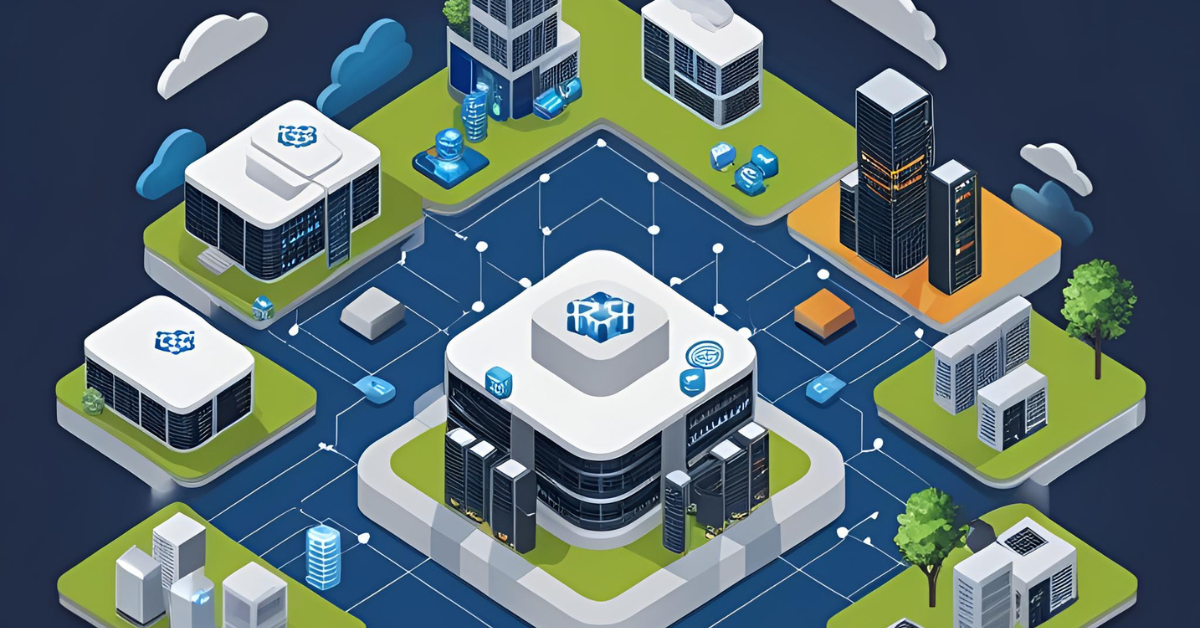
Overview of the Project
This project focuses on designing, implementing, and simulating robust Disaster Recovery (DR) protocols in the AWS Cloud. It aims to build an architecture that can withstand various failure scenarios, from the unavailability of a single Availability Zone (AZ) to the complete outage of an entire AWS Region. The core of the project involves deploying applications and databases in a highly available (Multi-AZ) configuration within a primary region and establishing replication and failover mechanisms to a secondary (Multi-Region) setup.
The project will involve:
- Deploying critical application components (e.g., EC2 instances for web servers, RDS for databases) across multiple Availability Zones in a primary region.
- Implementing data replication strategies to a designated secondary region (e.g., cross-region RDS Read Replicas, S3 Cross-Region Replication, custom application-level replication).
- Configuring intelligent routing using Route 53 to automatically (or semi-automatically) divert traffic to the healthy region during a disaster.
- Developing and testing automated recovery procedures (runbooks) to minimize Recovery Time Objective (RTO) – the maximum acceptable delay between the interruption of service and restoration of service, and Recovery Point Objective (RPO) – the maximum acceptable amount of data loss measured in time.
- Simulating cloud disaster scenarios (e.g., forcefully shutting down instances in one AZ, or simulating a regional outage) to validate the effectiveness of the DR architecture and recovery protocols.
Why It Matters
For enterprises and critical applications, high availability and business continuity are not just desirable features; they are often non-negotiable requirements. Unplanned downtime can lead to:
- Significant Revenue Loss: Every minute of downtime can translate directly into lost sales or service fees.
- Reputational Damage: Users quickly lose trust in unreliable services, leading to customer churn and brand erosion.
- Operational Disruption: Business processes halt, impacting employee productivity and supply chains.
- Regulatory Non-Compliance: Many industries have strict regulations regarding data availability, integrity, and business continuity.
- Data Loss: Without proper DR, a disaster can lead to irreversible data loss, which can be catastrophic.
This project is crucial because it teaches you not just to design for resilience but to prove it works by simulating disaster scenarios. It empowers you to build infrastructure that is:
- Resilient to Failures: Withstands component, AZ, or even regional outages.
- Prepared for the Unexpected: Offers a structured response to unforeseen events.
- Cost-Effective: Cloud-based DR can be significantly more affordable and flexible than traditional on-premises DR solutions.
Skills Required
Implementing a robust disaster recovery architecture demands a comprehensive understanding of cloud infrastructure, networking, and operational best practices:
- Networking Fundamentals (AWS VPC):
- Designing secure and isolated Virtual Private Clouds (VPCs).
- Configuring subnets (public/private), route tables, internet gateways, NAT gateways.
- Setting up security groups and Network Access Control Lists (NACLs).
- Understanding cross-region VPC peering or Transit Gateway for inter-region connectivity (if direct private connectivity is needed).
- DNS Configuration & Traffic Management:
- Deep understanding of Amazon Route 53 features for failover: health checks, routing policies (Failover, Weighted, Latency, Geolocation), and associated records.
- Configuring DNS propagation and cache refresh.
- Backup and Recovery Systems:
- Understanding different backup strategies (snapshots, continuous backup).
- Knowledge of S3 Cross-Region Replication (CRR) for durable storage of backups and static assets.
- Familiarity with RDS automated backups, snapshots, and cross-region Read Replicas.
- High Availability (HA) & Fault Tolerance Concepts:
- General principles of designing for HA (e.g., redundancy, load balancing, stateless applications).
- Understanding the difference between Multi-AZ (within a region) and Multi-Region (across regions) strategies.
- Defining and optimizing for RTO and RPO metrics.
- Infrastructure as Code (IaC):
- Proficiency with AWS CloudFormation, AWS CDK, or Terraform to define, provision, and manage the entire DR infrastructure in a repeatable and version-controlled manner.
- Automation & Scripting:
- Developing scripts (e.g., using Python with Boto3) or leveraging AWS Lambda/Step Functions to automate failover logic, recovery steps, and failback procedures.
- Configuring CloudWatch Alarms to trigger automated DR actions.
- Monitoring & Alerting:
- Setting up comprehensive monitoring using AWS CloudWatch for resource health, application performance, and DR event detection.
- Configuring alarms and notifications (SNS) for critical events.
Tech Skills & Stack
This project heavily utilizes key AWS services designed for resilience and global reach:
- Amazon EC2:
- Deploying application instances across multiple Availability Zones within an Auto Scaling Group for intra-region high availability.
- Utilizing Amazon Machine Images (AMIs) for fast provisioning of instances in the secondary region.
- Amazon RDS (Relational Database Service):
- Multi-AZ Deployments: For synchronous replication and automatic failover of the database within a primary region, ensuring high availability at the database layer.
- Cross-Region Read Replicas: For asynchronous replication of database changes to a secondary region, serving as the primary source for a potential DR failover (can be promoted to primary).
- Amazon Route 53:
- Health Checks: Monitors the health of endpoints (e.g., application load balancers, EC2 instances) in both primary and secondary regions.
- DNS Failover: Uses routing policies (e.g., Failover Routing Policy) to automatically redirect traffic to the healthy region's endpoint if the primary region's health checks fail.
- Weighted/Latency Routing (for Active/Active or more complex scenarios): To distribute traffic or send users to the region with the lowest latency.
- Amazon S3 (Simple Storage Service):
- Cross-Region Replication (CRR): For automatically, asynchronously copying objects (e.g., user-uploaded content, application assets, configuration files, backups) from a source S3 bucket in one region to a destination S3 bucket in another region. Crucial for data durability in DR.
- Used for storing static website content that can be served from either region.
- AWS CloudFormation (or Terraform):
- For defining the entire DR infrastructure as code, enabling repeatable, consistent deployments in both primary and secondary regions.
- Simplifies building and tearing down environments for DR testing.
- AWS Lambda / AWS Step Functions:
- For orchestrating automated failover processes, such as:
- Promoting an RDS Read Replica to primary.
- Updating DNS records in Route 53.
- Launching new EC2 instances or updating ECS services in the secondary region.
- Sending notifications.
- For orchestrating automated failover processes, such as:
- AWS CloudWatch:
- For collecting metrics and logs from all services.
- Crucial for defining Alarms that trigger DR events (e.g., if application errors spike, or latency increases significantly).
- AWS Auto Scaling:
- Ensures that your application maintains desired capacity and handles fluctuating load across AZs within a region, and can be used to scale up resources rapidly in the secondary region during failover.
Benefits
Implementing this multi-AZ and multi-region DR architecture yields substantial benefits:
- Enhanced Resilience & Business Continuity: Ensures your applications and data remain available even in the face of major disruptions, minimizing downtime and protecting critical business operations.
- Reduced RTO & RPO: By leveraging automated replication and failover mechanisms, the time to recover services and the potential for data loss are significantly minimized, adhering to stringent business requirements.
- Failover-Ready Infrastructure: Systems are explicitly designed and continuously tested for failover scenarios, giving confidence in recovery capabilities when a real disaster strikes.
- Enterprise-Grade Safety & Data Durability: Protects your valuable data against regional outages through cross-region replication and resilient database configurations.
- Global Reach & Performance (Optional): While primarily for DR, a multi-region setup can also lay the groundwork for serving users globally from the nearest region, reducing latency and improving user experience.
- Cost Optimization Compared to Traditional DR: Cloud elasticity allows for "pilot light" or "warm standby" DR strategies, where resources in the secondary region are scaled down or only provisioned when needed, reducing ongoing costs.
- Automated Recovery & Simplified Management: Automated runbooks and IaC reduce manual intervention during a crisis, leading to faster, more reliable, and less error-prone recovery processes.
- Regulatory Compliance: Helps meet stringent industry regulations and audit requirements for data availability and disaster preparedness.
Project 10: Disaster Recovery Architecture with Multi-AZ & Multi-Region Codes:
🔗 View Project Code on GitHubConclusion:
The Call to Action: From Cloud Concepts to Concrete Creations
Your "Final Thoughts" resonate deeply with the practical demands of the tech industry today. In 2025, the cloud isn't just a buzzword; it's the operational backbone of virtually every innovative venture. The AWS projects you've outlined are not merely academic exercises; they are vital blueprints for crafting real-world, production-ready applications.
Each project you've detailed serves as a skill amplifier, pushing you to master not just isolated services, but their intricate interplay within a cohesive architecture. For instance, understanding AWS IoT Core is valuable, but deploying a Real-Time IoT Data Dashboard with Grafana (Project 2) forces you to grapple with data pipelines, security, and visualization—skills critical for any data-driven role. Similarly, while knowing about machine learning is good, building a Predictive Maintenance system with SageMaker (Project 3) compels you to understand data preprocessing, model deployment, and the tangible business impact of ML.
These aren't just technical challenges; they're conversation starters. Imagine walking into an interview and being able to discuss not just what a serverless function is, but how you built a Serverless URL Shortener with API Gateway + DynamoDB (Project 9) that handles thousands of requests per second, or how you ensured an e-commerce backend remained resilient during peak traffic using Fargate + RDS (Project 4). Such hands-on experience demonstrates problem-solving ability, architectural thinking, and a practical understanding of cloud-native principles.
Ultimately, these projects are job unlockers. They equip you with the practical acumen that employers desperately seek in cloud engineers, DevOps specialists, data scientists, and even startup founders. Mastering concepts like Secure File Uploads with S3 Pre-Signed URLs + Cognito (Project 5) or designing a robust Disaster Recovery Architecture with Multi-AZ & Multi-Region (Project 10) directly translates into the ability to build secure, scalable, and resilient systems—the very foundation of successful modern applications.
The final call to action is powerful and precise: 🛠 Now go build, test, break, optimize—and rise.
This isn't just about deploying code; it's about embracing the iterative, experimental nature of cloud development. It’s about learning from failures, optimizing for performance, and continuously refining your craft. The sky, truly, is the limit for builders who are willing to deploy.
🚀 About This Program — Data Science, AI & ML
By 2030, data won't just be the new oil — it'll be the new oxygen. Every click, swipe, and sensor ping is generating oceans of data. But raw data is useless without people who can decode the chaos into clarity — data scientists who don’t just analyze, but strategize.
📊 The problem? Most programs churn out dashboard jockeys and textbook parrots. But the industry is starving for thinkers, builders, and decision scientists who can turn messy datasets into real-time, ROI-driving action.
🔥 That’s where Huebits flips the game.
We don’t train you to know data science.
We train you to do data science.
Welcome to a 6-month, project-heavy, industry-calibrated, Data Science, AI & ML Program — built to make you job-ready from day one. Whether it’s predicting churn, detecting fraud, forecasting demand, or deploying models in production, this program delivers hardcore practical skills, not just theory.
From mastering Python, Pandas, and Scikit-learn to deploying ML models with Flask — we guide you from raw data to real-world impact.
🎖️ Certification:
Graduate with a Huebits-certified credential, recognized by hiring partners, tech innovators, and industry mentors across sectors. This isn’t a paper trophy. It’s proof you can build, deploy, and deliver.
📌 Why It Hits Different:
Real-world industry projects
Mini capstone to build your portfolio
LMS access for a year
Job guarantee upon successful completion
💥 Your future team doesn’t care what you know — they care what you’ve built. Let’s give them something to notice.
🎯 Join Huebits’ Industry-Ready Data Science, AI & ML Program and turn your skills into solutions that scale.
🔥 "Take Your First Step into the Data Science Revolution!"
Ready to build real-world Data Science & AI projects that predict, automate, and actually deliver business impact?
Join the Huebits Industry-Ready Data Science, AI & ML Program and gain hands-on experience with data wrangling, predictive modeling, machine learning algorithms, model deployment, and visualization — using the exact tech stack the industry demands.
✅ Live Mentorship | 📊 Project-Driven Learning | 🧠 Career-Focused AI Curriculum
